
See page 38 for: Lengthening Life Spans for Diagnostic Imaging Equipment
MARCH 2024 | VOLUME 8 | ISSUE 3 MAGAZINE ADVANCING IMAGING PROFESSIONALS THEICECOMMUNITY.COM
PRODUCT FOCUS ULTRASOUND PAGE 29


ALL OF THE PARTS
ALL OF THE SAVINGS
CT MRI C-Arm Cath Lab
Ultrasound Portable
60,000+ parts in-stock and ready to ship
2x 80,000 sqft state-of-the-art facilities tailored to harvesting and quality control
100+
fully functional imaging devices to test parts and train engineers
<2% 80+
valid warranty rate employees with more than 100+ years of cumulative imaging technology experience
3.5
50
24/7/365
in-house technical and customer service support
apmsales@philips.com
Contact Us
866-507-4793
million pounds of recycled material promoting sustainability for the APM circular economy Modalities
X-Ray
X-Ray Biomed Parts and Training Available
ALL OF THE TIME
General
unique curriculums taught at our cutting-edge Center of Technical Excellence facility

15 22 29 12 19 26 4 11 18 25 15 22 29 13 20 27 3 10 17 24 8 15 22 29 12 19 26 16 23 30 14 21 28 11 18 25 2 Principles of Servicing Diagnostic X-Ray Systems (Phase 1) Principles of Servicing Diagnostic X-Ray Systems (Phase 1) eLearning Advanced Radiographic Systems Maintenance (Phase 2) Advanced Digital Imaging Systems Maintenance (Phase 3) Advanced Diagnostic Imaging Systems Analysis (Phase 4) PACS Engineer/Administrator Certification (Phase 1) eLearning Sep PACS Engineer/Administrator Certification (Phase 2) eLearning PACS Troubleshooting (3 days) eLearning C.A.M. (Capital Asset Management) Intro to Diagnostic Imaging & PACS For Managers & Sales Professionals GE Optima/Discovery/Definium DR Family: Optima XR640/XR646, Discovery XR650/XR656, Definium 6000/8000 Sep Feb Aug Philips Easy Diagnost Eleva Philips Digital & Bucky Diagnost 8-12 18-22 22-26 26-30 Siemens Luminos Agile 2-5* 7-11 Shimadzu RADspeed/RADspeed Pro 5-9 7-11 Private Practice X-Ray Systems (CPI CMP200 & Quantum Odyssey HF) Jul 29-Aug Injector Systems 11-15 GE AMX Portable (IV, IV+) Jul 29-Aug GE Optima XR200/XR220/XR240, & Brivo XR285 Digital Portables 25-29 Sep 30-Oct Shimadzu MobileDaRt Evolution Portables (Evolution EFX, MX7) 21-25 Canon RadPro Digital Oct 28-Nov Philips MobileDiagnost Digital Oct 28-Nov Fuji FDR Go & Go Plus 4-8 Multi-Product C-Arm OEC 9800/9900 OEC 9900 C-Arm Aug OEC Elite (CFD) Flat Panel C-Arm Aug Philips Veradius C-Arm Oct Philips BV Pulsera C-Arm Aug GE Innova/IGS/Optima Family (21/31/4100, 3XX/5XX/6XX) Philips Allura FD Family (FD10/FD20) Lorad Multicare Platinum Breast Biopsy System Aug GE Digital Mammography (1-week ESSENTIAL only) Hologic Selenia Digital Mammography Oct Hologic Dimensions 3D Tomo Digital Mammography Jan 29Hologic MG Products: Affirm, SecurView, R2, ATEC Sapphire Feb Oct Siemens Inspiration or Novation Nov Multi-Vendor Bone Densitometry Aug Dec Principles of Servicing US Systems (2.5 days) Mar Sep Dec Philips Epiq 5 & Epiq 7 (2.5 days) Mar Sep Philips iU22/iE33 (2.5 days) Sep GE Logiq E9, Vivid E9 (2.5 days) Principles of Servicing Multivendor CT Systems GE Optima, Brivo, VCT, LS, BS CT Family GE Revolution & Discovery CT Philips Brilliance Family Siemens Sensation Family Siemens Definition Family Servicing Multivendor MRI Systems Siemens MRI Family (Aera, Skyra, Espree, Avanto) GE Excite & GEMS MRI Family (X) Principles of Servicing Nuclear Medicine Systems Mar 3-7 Sep 9-13 Siemens Symbia Family 10-14 CRES CERTIFICATION CRES Certification Prep Apr 22-26 Oct 28-Nov Oct 21-Nov 1 Nov 4-15 Aug 19-30 Sep 9-20 Sep 9-20 Apr 8-19 Apr 15-26 May 13-24 MRI TRAINING COURSE TITLE EXHIBITS, PRESENTATIONS & NOTES WOMEN'S HEALTH NUCLEAR MEDICINE CT C-ARMS NETWORKING & DIGITAL INFO X-RAY CERTIFICATE SERIES MANAGEMENT PRODUCT SPECIFIC CARDIAC PORTABLES ULTRASOUND OCTOBER Jul 8-19 NOVEMBER DECEMBER JANUARY FEBRUARY MARCH APRIL MAY JUNE JULY AUGUST SEPTEMBER Dec 2-13 Dec 2-13 L A B O R D A Y T H A N K S G I V I N G May 6-17 Sep 23-Oct Sep 23-Oct Sep 30-Oct 11 Sep 30-Oct 11 Oct 14-25 Oct 14-25 Oct 7-18 Jan 8-19 Feb 5-16 Nov 4-15 Mar 4-15 Jun 3-14 Jun 17-28 Jun 3-14 Jan 22-Feb Aug 5-16 Mar 18-29 Jan 8-19 STATE OF OHIO REGISTRATION NO 93-09-1377T WWW.RSTI-TRAINING.COM/REGISTER CHECK OUT OUR COURSE CALENDAR! rsti-training.com | registration@rsti-training.com 2024 Course Schedule Register online at rsti-training.com/register or call 440-349-4700 Improving the quality of diagnostic imaging service through knowledge, education and Fully Engaged Hands-on Learning™. ISO 9001:2015 Certified (IQC Certificate No. Q-1158); State of Ohio Reg. No. 93-09-1377T

INTRODUCING OUR NEWEST AAMI CERTIFIED SERVICE TRAINING ON THE SIEMENS ARTIS Q

Technical Prospects, now DirectMed Imaging is excited to offer our newest service training on the Siemens Artis Q. This course expands upon the knowledge gained in Angio Fundamentals and Syngo classic courses. Unleash the full potential of your service organization through our dedicated training programs.
DirectMed Imaging’s Artis Q course is a 10-day, 60-hour integrated Artis Q course
• Week 1 is through our Interactive Virtual Training Academy (IVTA),
• Week 2 is In-person at our state-of-the-art training facility in Appleton, WI
Students will engage in:
• Labs centered around the core principles of operation, discussions, and lectures
• Component configuration, troubleshooting, and repair
• Software management
• Planned Maintenance
Further expand your knowledge by attending our 2-day in-person advanced workshops:
• Large Display Advanced Workshop
• 3D Calibration Advanced Workshop
Engineers will learn from the OEM and ISO perspective and will acquire essential skills to perform preventative maintenance, optimize system performance and ensure system longevity while earning valuable ACI Continuing Education Units (CEUs).
Our expert-led courses draw on 200+ years of imaging experience, focusing on Siemens Artis Q product line intricacies with smaller classes for enhanced hands-on learning.
All courses are AAMI Certified and provide continuing education units.
Our AAMI certified instructors bring a wealth of knowledge and field experience to guide your engineer to excellence.


DirectMedImaging.com Call (855) 463-3727 Contact Us to Reserve a Spot Today!

Also Supplying Your GE & OEC Cables at a Price You Can Afford Buying Repairable “ELITE” Interconnect Cables p/n 5840677-01 Call or email us the condition of the cable(s) and we will submit an offer to purchase the part. We will then inspect and test the part to see if it can be repaired. If it is deemed repairable, we will process the transaction and mail you a check the next day. EMAIL PHOTOS AND REQUESTS TO: INFO@ENG-SERVICES.COM CASH REWARD Kenneth C. Saltrick 330.425.9279 X.11 www.eng-services.com DEAD OR ALIVE
FEATURES

42
DIRECTOR’S CUT
38
COVER STORY
Several factors are extending the life cycles of diagnostic imaging equipment.

14
RISING STAR
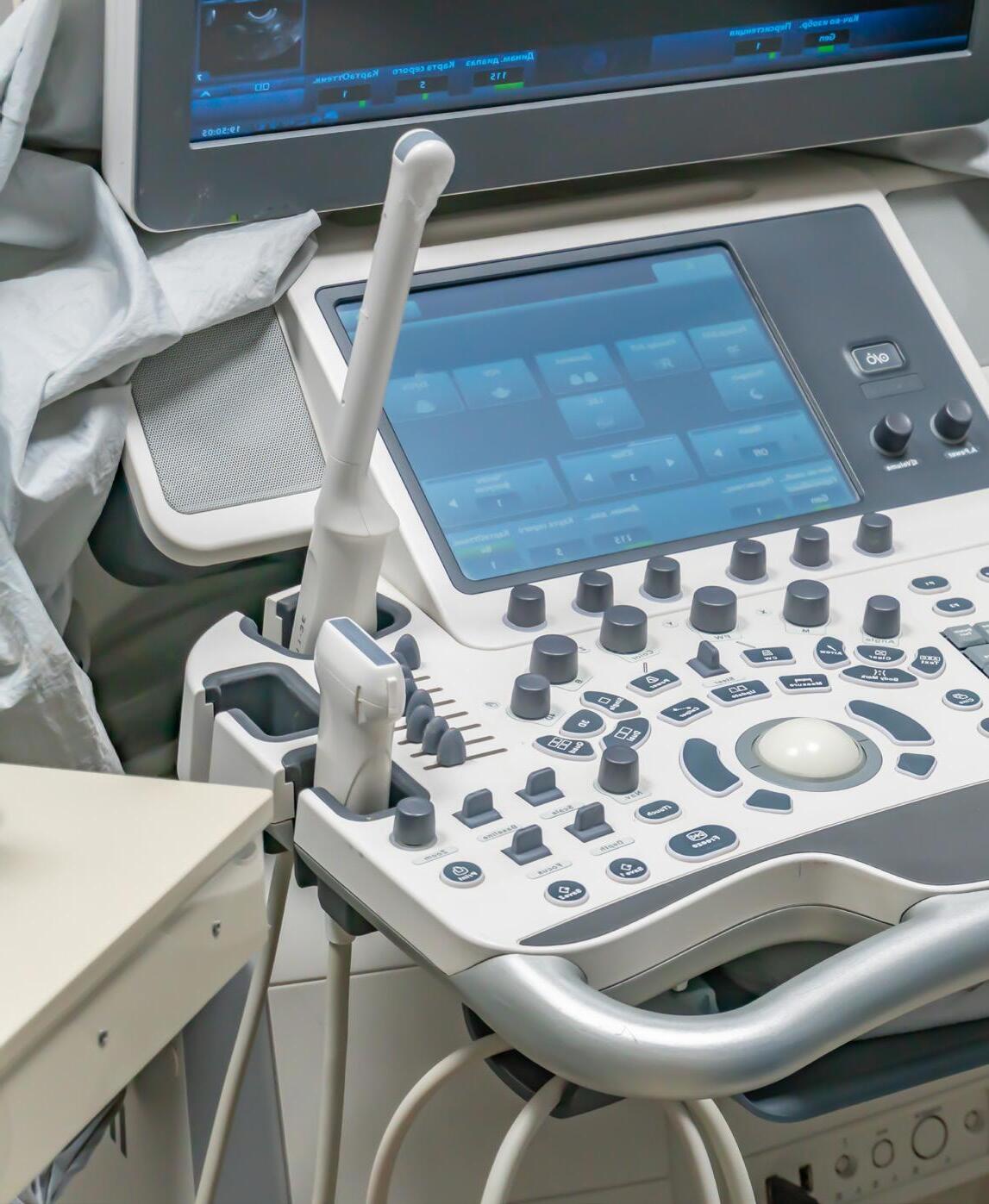
Ryan Kocak is a “visionary leader driving the adoption of new technologies to improve care for U.S. veterans.”
Nicole Dhanraj shares tips on how to prevent email from slowing down productivity.
ADVANCING THE IMAGING PROFESSIONAL 6 ICEMAGAZINE | MARCH 2024

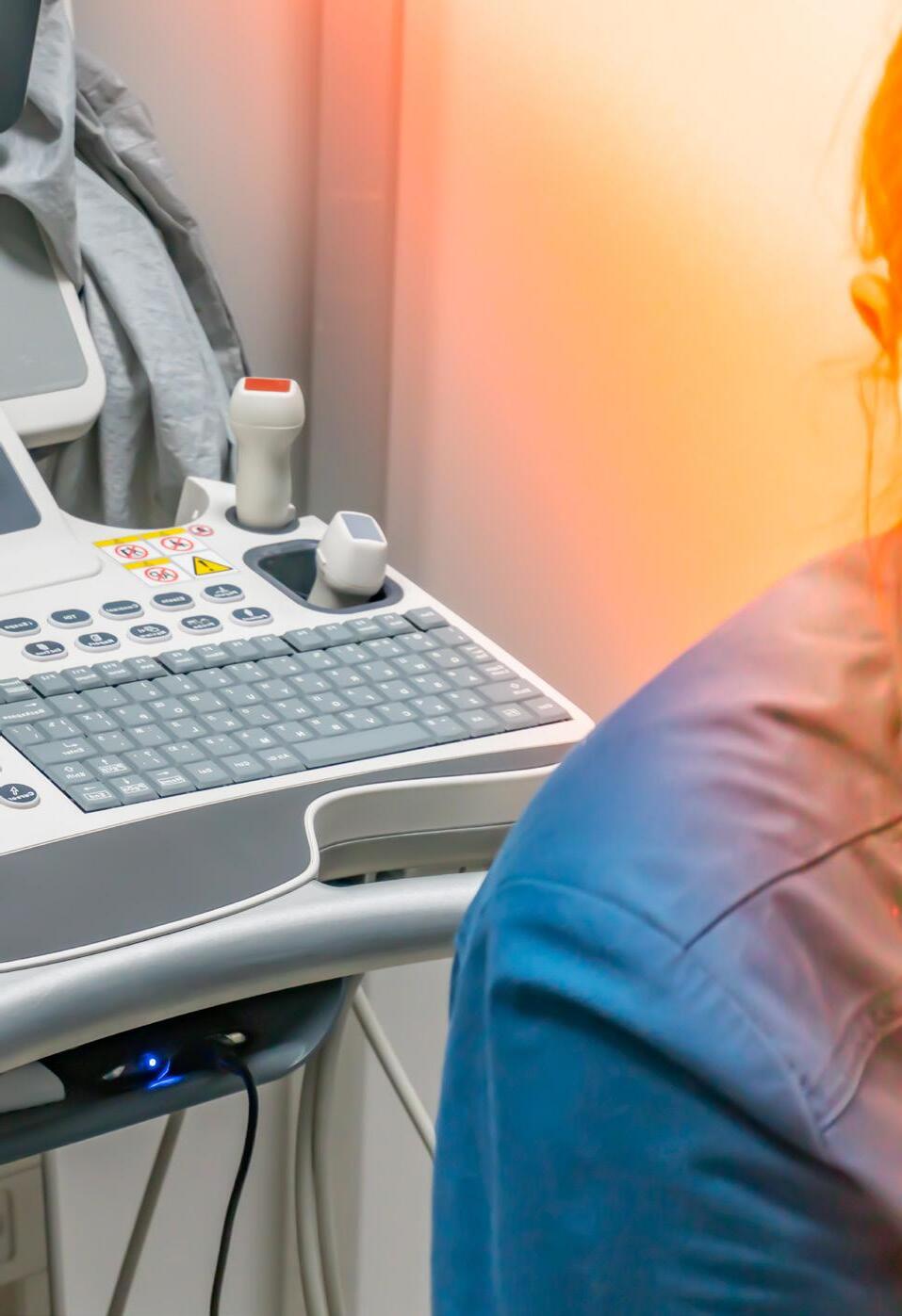
18
IMAGING NEWS
Catch up on the latest news from around the diagnostic imaging world.


29
PRODUCT FOCUS
A look at some of the latest and greatest ultrasound systems on the market today.
EMOTIONAL INTELLIGENCE
Tips for addressing an interpersonal conflict at work.
MARCH 2024
48 ICEMAGAZINE 7 THEICECOMMUNITY.COM
Vice
CONTENTS SPOTLIGHT 10 In Focus Brooke Beeson 12 Rad Idea Support Underappreciated Professionals 14 Rising Star Ryan Kocak 16 Off the Clock Reed Omary NEWS 18 Imaging News A Look at What’s Changing in the Imaging Industry 26 Webinars Webinar Addresses Leadership Exhaustion PRODUCTS 28 Market Report 29 Product Focus Ultrasound Systems INSIGHTS 32 Director’s Circle Sponsored by Innovatus Imaging 42 Director’s Cut Escaping Email Vortex and Time Management Turmoil 44 PACS/IT Non-con Growth and AI 46 DEI A Committee-Driven Approach to DEI 48 Emotional Intelligence Dealing with a Critical Coworker 51 Roman Review What Your Body is Actually Saying 52 Medicine for the Soul 5 Habits to Reduce Stress 53 ICE Break 54 Index ICE Magazine (Vol. 8, Issue #3) March 2024 is published by MD Publishing, 1015 Tyrone Rd., Ste. 120, Tyrone, GA 30290. For subscription information visit www. theicecommunity.com. The information and opinions expressed in the articles and advertisements herein are those of the writer and/or advertiser, and not necessarily those of the publisher. Reproduction in whole or in part without written permission is prohibited. © 2024
Publishing 1015 Tyrone Rd. Ste. 120 Tyrone, GA 30290 Phone: 800-906-3373
John M. Krieg john@mdpublishing.com
MD
President
President Kristin Leavoy kristin@mdpublishing.com
President of Sales Jayme McKelvey jayme@mdpublishing.com
Publisher Megan Cabot megan@mdpublishing.com
John Wallace
Board
C. Theadore
Dhanraj
W Mulaik
E. Salley
Thiesse-Yount Traci Foster
Emily Hise
Department
Gower
Hayes
Johnson Events
Leavoy Webinars Linda Hasluem
Department
Galindo
Krieg Haley Wells Accounting Diane Costea 8 ICEMAGAZINE | MARCH 2024 ADVANCING THE IMAGING PROFESSIONAL
Vice
Group
Editorial
Editorial
Jason
Nicole
Melody
Verlon
Rachel
Sales
Art
Karlee
Taylor
Kameryn
Kristin
Digital
Cindy
Kennedy

Centers of Excellence for Ultrasound Probe and MRI Coil Repair, and Design & Manufacturing Innovatus Imaging vs. XYZ Probe Repair Which is best for you, your patients, and your budget? Take the Probe Repair Challenge and find out! 844-687-5100 customercare@innovatusimaging.com Scan here to see how our clients are optimizing their uptime and budget with Innovatus Imaging. Visit us at booth 203 at MDExpo in Las Vegas April 7 - 9
BROOKE BEESON
FOCUS IN
 BY GERRI HUNT
BY GERRI HUNT
In early July, Brooke Coleman Beeson was promoted to the position of director of radiology at Atrium Health Wake Forest Baptist on the Lexington Medical Center campus in Davidson County, North Carolina.
She remembers where her career began.
As a Henry County, Virginia high school senior, Beeson had offers from several universities.
“I was on a business track, but as I got closer to high school graduation, I didn’t have a clue about what I wanted to do,” she said. “Do I jump into a four-year university at this point?”
Beeson opted to enroll at a local community college, where she quickly realized accounting and business were not for her.
“I wanted job security, and
to help people, and to never be bored,” she said, changing her focus to health care.
Beeson crossed the state line, established residency in North Carolina, and enrolled at Rockingham Community College.
“RCC is a wonderful place, there is so much here to offer. There are so many basics here. I felt so adequately prepared both professionally and academically for everything else I did,” she said.
“The instructors are fantastic. I always felt like their doors were open and they wanted to see me succeed. It was really a good fit,” she said.
Once at RCC, Beeson discovered the field of radiology. That program was not offered at RCC, and Forsyth Tech was not finished setting up its 18-month radiologic science program –the college’s first accelerated program.
Beeson opted to stay at RCC. She earned her Associate in Arts in general studies in
SPOTLIGHT
Brooke Beeson is the director of radiology at Atrium Health Wake Forest Baptist on the Lexington Medical Center campus.
10 ICEMAGAZINE | MARCH 2024
Photo Credit: Gerri Hunt
May 2000, and then immediately enrolled at Forsyth Tech.
“I had all the basics out of the way from RCC, so I could focus just on the radiology program there,” she said.
Two months before earning her Associate in Science degree from Forsyth Tech in December 2001, she began working full-time at Wake Forest Baptist Medical Center.
Several years later, Beeson realized she still wanted more, and set her sights on more education.
She returned to RCC to take Spanish courses “because I had such a good experience the first time around,” she said.
Beeson then transferred those credits to High Point University where she enrolled in evening classes.
She continued to work full-time, juggling her schedule to make sure she could still be a mom and a wife at her Stoneville home.
“We made it work,” she said, adding that she earned her bachelor’s degree in human relations with a concentration in business from HPU.
Strategically waiting for her daughter to reach a more independent age, in 2020 Beeson started working on her Master’s in Public Administration with a concentration in health care and government, from Liberty University, which she earned.
“Prior to [my current position with Atrium Health],
BROOKE BEESON
Network Imaging Director
1. What is the last book you read? I am currently rereading “The 5 Languages of Appreciation in the Workplace.”
2. Favorite movie? “National Lampoon’s Christmas Vacation”
3. What is something most of your coworkers don’t know about you? I am an extreme introvert. It takes a conscious effort to “put myself out there.”
4. Who is your mentor? My current mentor is a radiology administrator from Tennessee. We met at an imaging leadership conference a couple of years ago. We instantly clicked, and I knew I needed her on my personal advisory board!
5. What is one thing you do every morning to start your day? Review my to-do list that I draft each Monday morning. It’s divided into two categories: “do now” tasks and “do later” tasks.
I was in the imaging manager role in Winston-Salem. I managed just X-ray. I transferred over to Lexington as director of all of radiology, which encompasses all branches of radiology, including MR, CT and ultrasound,” she said.
“I now run the day-to-day operations, budgeting, productivity, quality metrics across the region. I do a lot of educational outreach in the area and with the local community college,” she continued.
Beeson is a guest lab instructor with Forsyth Tech, Wake’s main feeder program to radiological science, and is working with McMichael High School to have students tour Forsyth’s facilities. She wants to engage middle schoolers as well, because outreach “has to be early,” she acknowledged.
“The potential in the imaging field is limitless, and I’m a great example of that,” Beeson said. “There are some four-year degrees in medical imaging, the largest being UNC-Chapel Hill, but the minimum requirement is a two-year degree.”
What’s unique about Beeson’s career path is that it has enabled a very strategic pursuit of each step.
“Now I’m 44, still very young, but I’m in a place in my life where I feel like I’m ready to do some of my best work,” she said. “And I attribute all of that to my start here at RCC.” •
6. Best advice you ever received? Lead by example and with heart – never ask your team to do something you would not do yourself.
7. Who has had the biggest influence on your life? Jesus and my mom
8. What would your superpower be? I would love to be able to see the future!
9. What are your hobbies? I love any time spent with my husband and daughter – we always have fun! We enjoy traveling, and we love sports, especially college basketball (Go Heels!). I also love reading, estate sale, shopping and cooking.
10. What is your perfect meal? Anything prepared at home! I enjoy recreating dishes at home we’ve enjoyed elsewhere and also experimenting with different cuisines and cooking methods.
ICEMAGAZINE 11 THEICECOMMUNITY.COM

Rad idea
SUPPORT UNDERAPPRECIATED PROFESSIONALS
Unsung heroes make everyday living possible. They work behind the scenes and tackle some of the most demanding work imaginable, such as maintaining facilities and keeping them in tip-top condition. You can show your appreciation for deserving workers such as your favorite custodians or maintenance staff members in numerous ways, including these suggestions from Rubbermaid Commercial Products, supporters of cleaning and maintenance professionals nationwide. These are also great tips for members of your team who report directly to you.
WRITE THANK YOU NOTES
In today’s digital world, handwritten notes are a novelty. The times may be changing, but the impression a thoughtful handwritten message leaves behind hasn’t changed at all. Keep a supply of blank notecards so you can offer notes to those who make a difference in your life. The sentiments don’t need to be long; a simple expression of gratitude is enough to brighten someone’s day.
PARTICIPATE IN APPRECIATION EVENTS
You might receive information from different departments
about opportunities to support staff members in facilities, IT, healthcare technology management during specific weeks. Consider hosting meals or helping with cleanup. Finding opportunities to support underappreciated staff can allow staff members to show thanks in meaningful ways.
RECOGNIZE MILESTONES
Often, those behind the scenes blend into the fabric of everyday life. They’re rarely the focal point of celebrations, but often make it possible for others to honor special occasions. Make a point to know about the underappreciated professionals in your facility, so you can recognize events like birthdays, work anniversaries and other dates that hold special personal meaning.
LEAD BY EXAMPLE
You don’t need to wait for others to join you in recognizing those whose impacts are made behind the scenes. Speaking up and taking action can serve as a positive example for those around you. You can even take the lead and organize an effort to recognize individuals who rarely receive thanks. •
Share
SPOTLIGHT
your RAD IDEA via an email to editor@mdpublishing.com.
ADVANCING THE IMAGING PROFESSIONAL 12 ICEMAGAZINE | MARCH 2024

RISING STAR
RYAN KOCAK

Ryan Kocak is a “visionary leader.”
It is not common for an imaging leader from one health care system to nominate a Rising Star candidate from outside the system, but that is exactly what happened when University Hospitals Cleveland Medical Center Chief Medical Physicist Dave Jordan nominated Louis Stokes Cleveland VA Medical Center Director of Health Science Ryan Kocak, (ARRT) (R)(CT).
“Ryan is a visionary leader driving the adoption of new technologies to improve care for U.S. veterans. A veteran himself, Ryan was the original architect of the VA Radiation Dose Network (VARDN) project and is engaged in ongoing innovations around 3D printing, virtual and augmented reality, and radiology data analytics. He is also pursuing a Ph.D. to develop his skills and knowledge to the next level. Ryan has been recognized within the VA organization as a successful innovator, and he is a valued team member and resource for radiology leaders within the organization,” Jordan wrote in the nomination.
ICE Magazine recently found out more about Kocak and what makes him stand out as a Rising Star.
Q: WHERE DID YOU GROW UP?
A: I grew up in Amherst, Ohio, approximately 30 minutes west of Cleveland. Since leaving for the U.S. Air Force after high school, I’ve primarily resided in Florida, Kentucky, and,
SPOTLIGHT
ADVANCING THE IMAGING PROFESSIONAL 14 ICEMAGAZINE | MARCH 2024
for the past 10 years, in Sharon Township, Ohio.
Q: WHERE DID YOU RECEIVE YOUR IMAGING TRAINING?
A: I received my initial imaging training and education through the U.S. Air Force. This experience allowed me to earn a degree in radiological sciences and become a registered radiologic technologist in both radiography and computed tomography.
Q: HOW DID YOU FIRST DECIDE TO START WORKING IN IMAGING?
A: Enlisting in the U.S. Air Force led me to the diagnostic imaging career field. Although I had limited knowledge about imaging before joining, I quickly developed a passion for the technology, physics, and creative aspects involved in generating and managing medical images. My prior background in computers and networking propelled me to delve into DICOM and HL7 applications within imaging.
Q: WHAT IS THE MOST REWARDING ASPECT OF YOUR JOB?
A: The most rewarding aspect of my job is building enhanced systems for veteran care. This often entails identifying areas for enhancement throughout the entire imaging process, including pre-exam analytics, technology deployment, image storage and transmission across an imaging enterprise, and post-exam processes.
Q: WHAT DO YOU LIKE MOST ABOUT YOUR POSITION?
A: I thoroughly enjoy applying new technologies and processes to diagnostic imaging, particularly those related to “extending the imaging chain.” This involves activities such as post-processing cross-sectional imaging for 3D printing and extended reality models, as well as processing and generating imaging metadata for quality improvement initiatives.
Q: WHAT INTERESTS YOU THE MOST ABOUT THE IMAGING FIELD?
A: I’m particularly fascinated by the digitalization of anatomy and biological processes. Witnessing the evolution of the imaging industry from 90-second film processors to computed radiography, digital radiography, and now the integration of artificial intelligence (AI) enhancements has been truly captivating and enjoyable to be a small part of.
Q: WHAT HAS BEEN YOUR GREATEST ACCOMPLISHMENT IN YOUR FIELD THUS FAR?
A: While serving as an associate radiation safety officer, I embarked on a project to track dose output data
through DICOM. This endeavor evolved into the VA Radiation Dose Network (VARDN) project, involving the indexing of radiation exposure metrics across the VHA. This grassroots initiative expanded across the VHA, providing me with valuable experience in navigating and leading other large-scale projects.
Q: WHAT GOALS DO YOU HAVE FOR YOURSELF IN THE NEXT 5 YEARS?
A: Over the next five years, I aim to complete my doctorate and contribute to the ethical advancement of AI in imaging science. I’m also dedicated to further developing a novel imaging data curation tool for AI research within the VHA. •
FUN FACTS
FAVORITE HOBBY: Tinkering
FAVORITE SHOW: “Ted Lasso”
FAVORITE FOOD: Pizza
FAVORITE VACATION SPOT: Family vacation home in Bellaire, Florida
1 THING ON YOUR BUCKET LIST: A Cleveland Browns Super Bowl.
SOMETHING YOUR COWORKERS DON’T KNOW ABOUT YOU: I attended seminary and served as a chaplain in the Air Force.
ICEMAGAZINE 15 THEICECOMMUNITY.COM
Clock Off THE
REED OMARY
BY MATT SKOUFALOS
Reed Omary is the Carol D. & Henry P. Pendergrass Professor, Department of Radiologic Sciences Professor of Biomedical Engineering at Vanderbilt University Medical Center & School of Medicine. He has always been drawn to origin stories. Whether it’s the cosmic birth of the human species or the seeds of an idea, Omary is interested in the throughlines that connect those notions from the past to the present.
Working in a university setting, he is immersed daily in an academic environment; yet it was during the novel coronavirus (COVID-19) pandemic, and the quarantines that followed, that Omary found the opportunity to contemplate the ideas that would influence the next phase of his career.
As he watched the pandemic lay bare so many fundamental social inequities in America and across the planet, Omary was struck by the notion that the work of healthcare is deeply connected to many other fields of experience, but seldom regards itself in that fashion.
During the pandemic, “Health questions dominated all aspects of society, but these questions nominally didn’t fit into our purview as health systems,” he said. “When do our kids go back to school? When can they go back to sports? Is it safe for my mother-in-law, who’s in her late 80s, to go shopping?
“The questions that society had of us weren’t directly ‘Take care of me, I’m sick,’” Omary said, “they were, ‘How do I run my life?’ And the actions of individuals in one part of the world affected the common good in another.”
“That’s when I realized that we in health care actually needed to address societal issues outside of the geographic borders of our health systems,” he said.
Following the same train of thought, Omary realized that the problems that the pandemic had revealed were

even more pronounced in the context of the global underlying issue of climate change. If COVID-19 was the public health crisis that altered the course of every other political issue, climate change was the political crisis that altered the course of every other public health issue.
“COVID was an amazing laboratory to test what worked and what didn’t, but climate is exponentially harder to address than COVID,” Omary said. “And we’re not talking only about effects that we might face ourselves. Our children are going to be the beneficiaries or the victims of the actions that we all take collectively today.”
“I came to understand an important concept,” he said. “The decisions that we make as one individual may not matter, but collectively, they add up, and these decisions can be really helpful, or destructive.”
Omary “spent about a year in stealth mode,” just reading up on climate change, and organizing his thoughts, sharing his approach only with a few close friends.
“Most of them told me, ‘I don’t understand why a radiologist is interested in climate change,’” he said. “So I then vowed I was going on a mission to raise awareness about climate change, and to help foster research and educational programs in this area.”
In the two years that followed, Omary leveraged professional opportunities to bring his message to the forefront of issues in the imaging community. He spoke about the intersection of climate change and radiology on grand rounds. As the president-elect of AUR, the Association of University Radiologists, Omary shepherded a theme of sustainability in radiology for its 2022 annual meeting; he did the same as the president-elect of SCARD, the Society of Chairs of Academic Radiology Departments. And at the end of 2023, Omary stepped away from his academic position to embark on a sabbatical studying the impact of climate change on health care.
“I wanted to help take all of health care, and not just radiology, into a greener future,” he said. “I found that if I
SPOTLIGHT ADVANCING THE IMAGING PROFESSIONAL 16 ICEMAGAZINE | MARCH 2024


wanted to take this to the next level, I couldn’t do it as a side hustle.”
In the course of his research, Omary has connected with as diverse a group of people as he can meet — CEOs, chefs, politicians, poets, students, scientists — from across the world, trying to understand the biggest needs in transitioning health care to a more sustainable future by cutting waste and reducing carbon emissions.
“A number of learns rise right to the top,” he said. “One is that we have to address climate together. Radiology can’t do it just in radiology; a hospital can’t do it alone. Universities can’t do it alone, industry can’t do it alone, government can’t do it alone. Climate change is a collective problem that requires collective solutions.”
To underscore his position, Omary points to the impact of global-scale climate-change effects on parts of the world that are not typically understood to be interconnected. When air quality across North America was dramatically worsened by wildfires in the Canadian boreal forests last year, it triggered his daughter’s asthma in Tennessee — parts of which also have experienced record snowfalls in recent years for a Southeastern state. Moreover, these impacts are accelerated by human behavior, particularly
the actions of global industries such as health care, and are not evenly distributed among communities with the resources and resolve to withstand them.
“Addressing equity should include a climate lens, and I think any climate solution should include an equity lens,” Omary said. “When I’m invited to speak, I frequently share how equity and climate change are interrelated.”
“When we look at health outcomes of individuals in the United States, the number one predictor of life expectancy is ZIP code. How do we as physicians, scientists, nurses, or radiology techs contribute to the emissions and the environmental waste that our health systems are spewing out? Let’s recognize that this pollution unfairly targets the communities that are least able to tolerate it,” he says.
In addressing these challenges, Omary is focused on forming partnerships among health care professionals and leadership in various industries, as well as shaping the framework for those conversations by intentionally using language that reduces partisan politics.
“The way to reduce our partisan divide is to avoid words or phrases that tie us to one ideology or another,” Omary said. “I like to use the words ‘planet,’ ‘planetary health,’ ‘human
health’. As a physician, these words emphasize our shared purpose to improve health and patient care. Instead of fighting against climate change, we’re fighting for health. It’s a subtle change that can lead audiences to become more receptive to our message.”
Ideally, Omary said, he would like to work “at the intersection of health and sustainability,” helping re-energize health care workforces by “developing the skills that will allow them to contribute to improving the health of the planet as they improve the health of patients.”
“I see the health care workforce as a future flywheel for sustainability,” he said. “Let’s open the gates in health care to those who also care about our planet. The younger generation understands the importance of taking care of our planet. Through our workforce, we have so much opportunity that, if harnessed correctly, could provide immense benefit. At the same time, if health systems view sustainability as just another learning module to be foisted on all, it will be extremely counterproductive. We need to choose our actions wisely.” •
You can read more about Omary’s perspective in his blog, “The Green Leap,” at reedomary.com.
ICEMAGAZINE 17 THEICECOMMUNITY.COM
Reed Omary is seen with a rainbow in the background during a trip to Amsterdam in 2023. When back home in Nashville, he commutes to work on his bicycle.
Imaging News
A LOOK AT WHAT’S CHANGING IN THE IMAGING INDUSTRY
PROBO MEDICAL TO ACQUIRE ALPHA SOURCE GROUP
Probo Medical has signed a definitive purchase agreement to acquire Alpha Source Group in a deal that expands Probo’s diagnostic imaging solutions platform. Alpha Source Group is comprised of its subsidiaries, Alpha Source Biomed Solutions, BC Technical Imaging Solutions and Medical Optics Surgical Solutions.
Alpha Source, founded in 1986, delivers technical field service, depot repair, equipment refurbishment and resale, and parts distribution solutions to the North American health care market. Its expertise and capabilities are utilized across a broad customer base that includes OEMs, ISOs, asset managers, hospitals, distributors and resellers. With more than 100 field-based engineers, Alpha Source is one of the largest field service organizations for diagnostic imaging equipment in North America. The field service organization is supported by in-house expertise at four Centers of Excellence in Salt Lake City, Utah; Jeffersonville, Indiana; Tamarac, Florida; and Milwaukee, Wisconsin. These centers specialize in repair, refurbishment, parts harvesting and distribution of multi-modality medical equipment, including nuclear medicine, PET, CT, MRI, PET/CT, ultrasound, bone mineral density, medical batteries and biomedical equipment.
“This acquisition is transformational in nature for both Probo Medical and Alpha Source,” said Michael Asmer, CEO of Probo. “Probo has built a scalable platform in the ultrasound market in North America, capable of supporting customers with ultrasound system sales, repairs, service, applications training, and spare parts at a quality and value level that leads the market. Alpha Source’s capabilities, team and relationships provide us with the ability to extend that platform wider and deeper into new imaging modalities like nuclear medicine, CT and PET/ CT. For Alpha Source, there are multiple commercial and growth opportunities that will come as being a part of the Probo platform. Probo is a global leader in system procurement across the aforementioned modalities. Integrating that proficiency with Alpha Source’s technical capabilities will quickly allow us to expand parts harvest and distribution, scale system refurbishment and resale, and optimize our ability to deliver best-in-class field service with a global team of over 350 field service engineers. Combining all of that with Probo’s capabilities around the logistics, storage and installation of diagnostic imaging systems makes this a combination that we are tremendously excited about.”
NEWS
ADVANCING THE IMAGING PROFESSIONAL 18 ICEMAGAZINE | MARCH 2024
NEUROLOGICA CORP RECEIVES INNOVATIVE TECHNOLOGY DESIGNATION
NeuroLogica Corp. has announced that its OmniTom Elite PCD has received an Innovative Technology designation from Vizient Inc., a provider-driven health care performance improvement company. NeuroLogica Corp. exhibited OmniTom Elite PCD at the Vizient Innovative Technology Exchange in Dallas.
Each year, health care experts serving on Vizient customer-led councils review select products and technologies for their potential to enhance clinical care, patient safety, health care worker safety or to improve business operations of health care organizations. Innovative Technology designations are awarded to previously contracted products to signal to health care providers the impact of these innovations on patient care and the business models of health care organizations.
NeuroLogica’s OmniTom Elite PCD is a groundbreaking innovation in medical imaging, according to a press release.
“This mobile CT scanner boasts high-resolution imaging and material decomposition capabilities, enabling health care professionals to conduct precise neuroimaging at the patient’s bedside in the ICU, or in another area designated by the facility such as the ER department. Cleared for use on adults, the reduction of artifacts can increase the ability to identify a bleed along the skull versus contrast, reducing the risk of a potential misdiagnosis, and helping to better identify pathology in the posterior fossa. Post thrombectomy, it can differentiate between blood and iodine staining without needing to wait. Where conventional CT PCD, Dual Energy, or Spectral CT imaging is in use, the Neuro-

Logica OmniTom PCD scanner can help to standardize imaging system-wide,” the release states.
“NeuroLogica has always been driven to innovate and expand the world of health care,” said Renaud Maloberti, head of mCT Business. “From the creation of mobile CT to implementation of the first single source, single detector photon counting CT, we are witnessing the next stage of imaging care and standardization.”
“Congratulations to NeuroLogica Corp. for achieving this peer-designated status,” said Kelly Flaharty, Vizient senior director of contract services. “Our customer-led council deemed OmniTom Elite PCD worthy of this designation for its potential to make an incremental difference in health care.”
NEW DUAL-ENERGY MOBILE SYSTEM AVAILABLE IN THE U.S.
After fulfilling all regulatory requirements, the KA Imaging premium dual-energy mobile system, Reveal Mobi Pro, is now available for sale in the United States. This product is a collaboration with UMG/Del Medical.
The Reveal Mobi Pro integrates KA Imaging’s Reveal 35C detector with SpectralDR technology into a complete mobile X-ray solution. Reveal’s ability to simultaneously acquire conventional and dual-energy images with a single exposure at the bedside improves hospital and patient outcomes and protects revenue by reducing outflows.
The Reveal 35C detector mimics the workflow, dose, and techniques of state-of-the-art mobile DR X-ray. With the Reveal Mobi Pro, it is offered in a fully integrated mobile system.
According to KA Imaging, one of the most prominent use cases for SpectralDR technology is the ICU. Medical imaging plays a critical role in monitoring the condition of ICU patients, commonly to check for conditions like pneumonia or pneumothorax or to rule out other potentially serious pulmonary issues along with verifying the tips of catheters or endotracheal tubes.
Imaging in the ICU can be challenging because of reduced patient mobility, the need for imaging outside regular operating hours, and the need for quick imaging turnaround for bedside decision making.
Generally limited on tissue differentiation, portable chest radiography can be ineffective at accurately spotting complex pulmonary issues and sometimes even to localize the tips of lines and tubes. Other modalities like CT are not portable, bring increased radiation exposure, in addition to risks associated with intra-hospital patient transportation. Furthermore, reimbursement for ICU patients is capitated so an unnecessary CT scan increases cost of care and the financial burden for hospitals.
“Our radiographic spectral images separate materials such as water (i.e., soft tissue, lung lesions etc.) and calcium (i.e. bones, retained foreign objects, in dwelling devices or other calcifications) and are higher contrast thus, easier to read for a variety of clinicians including intensivists, residents and radiologists,” said Dr. Karim S. Karim, CTO of KA Imaging.
ICEMAGAZINE 19 THEICECOMMUNITY.COM
GE HEALTHCARE TO ACQUIRE MIM SOFTWARE
GE HealthCare has entered into an agreement to acquire MIM Software, a global provider of medical imaging analysis and artificial intelligence (AI) solutions for the practice of radiation oncology, molecular radiotherapy, diagnostic imaging, and urology at imaging centers, hospitals, specialty clinics, and research organizations worldwide. GE HealthCare expects to leverage MIM Software’s imaging analytics and digital workflow capabilities across various care areas to accelerate innovation and differentiate its solutions for the benefit of patients and health care systems around the world.
Recognizing the industry transformation taking place as digital innovation reshapes the experience of patients and providers, GE HealthCare is focused on developing smart devices, aligned to disease states and enabled by digital. These efforts are reflected in the company’s mission to make hospitals more efficient, clinicians more effective, therapies more precise, and patients healthier and happier.
MIM Software’s portfolio of innovative imaging solutions provides a variety of beneficial features, including: the integration of diagnostic images from multiple modalities into treatment plans; automation to help reduce repetitive tasks and manual interventions; quantitation and advanced processing in diagnostic imaging and nuclear medicine to help determine therapy response; and a platform to assist
with theranostics imaging and dosimetry.
GE HealthCare expects to integrate MIM Software solutions into its advanced visualization offerings to facilitate AI-based segmentation and contouring as well as dosimetry analysis for patients across their treatment journeys and in the growing fields of radiology, molecular imaging and radiation oncology.
“Our anticipated acquisition of MIM Software will mark a key moment in the evolution of our technology. By integrating MIM Software’s cutting-edge imaging analytics and AI-driven solutions with GE HealthCare’s advanced medical technology, we are not just expanding our capabilities, but joining together to embrace the possibilities of precision care. This intended merger is a fusion of innovative visions, aimed at evolving the way we detect, treat, and manage disease,” shares Taha Kass-Hout, MD, MS, chief technology officer of GE HealthCare. “GE HealthCare is committed to developing smart, AI-powered devices that cater to specific disease states, thereby enabling clinicians to deliver more personalized care. We expect the integration of MIM Software will also advance our efforts in connecting data across care pathways. It is a leap towards a future where health care is more precise, connected, and efficient, with the goal of benefitting providers and patients worldwide.”
THIRONA RECEIVES FDA 510(K) CLEARANCE FOR LUNGQ SOFTWARE
Thirona has received FDA 510(k) clearance for the latest update of its AI-based clinical software LungQ (v3.0.0), making its new features widely available for use in hospitals in the United States.
LungQ 3.0.0 is one of the only FDA-cleared solutions that is capable of using AI to automatically segment the pulmonary segments and subsegments found in the internal anatomy of the lung. Based on this analysis, which includes the identification of structures such as lobes, segments, subsegments, airways and fissures, the technology performs an analysis of the lung tissue and the fissure completeness, supporting physicians in the diagnosis and documentation of pulmonary tissue images from CT thoracic datasets for each individual patient.
“A clearer understanding of lung anatomy helps enable broader adoption of minimally invasive treatments for lung diseases such as COPD and lung cancer, helping save more healthy lung tissue and lung function capacity. Acting as a map for lung anatomy, LungQ helps guide bronchoscopic navigation, leveraging AI to significantly enhance the precision, accuracy, and efficiency of bronchoscopic and surgical lung interventions,” said Eva van Rikxoort, founder and CEO of Thirona. “Solutions like LungQ are helping usher in a new era of personalized treatment for lung patients, enabling clinicians all over the world to conduct more advanced, easier-to-perform and less invasive procedures with full confidence.”
NEWS
ADVANCING THE IMAGING PROFESSIONAL 20 ICEMAGAZINE | MARCH 2024
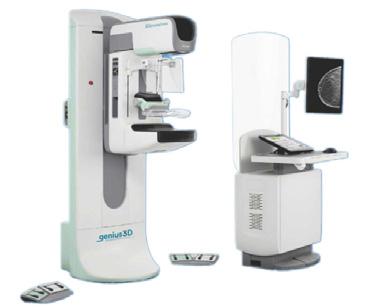
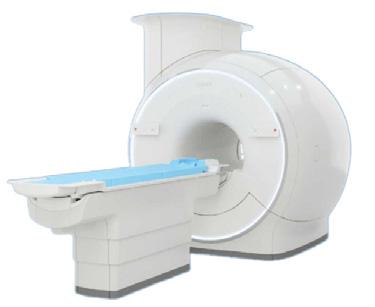
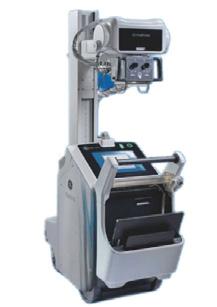



info@medilabglobal.com
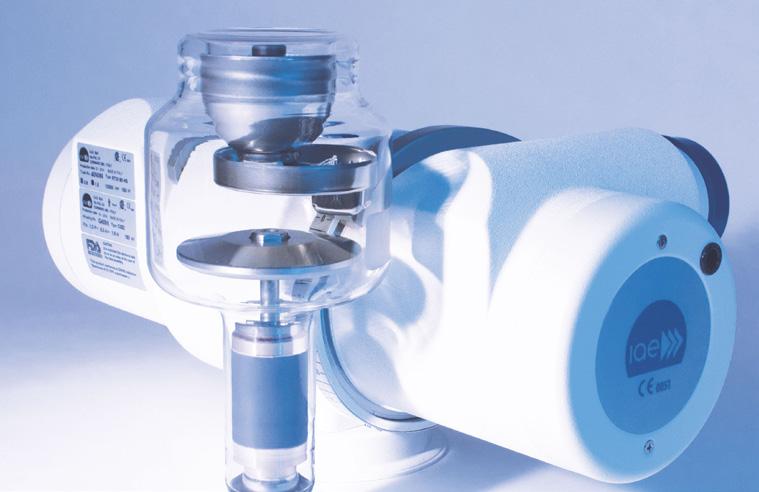
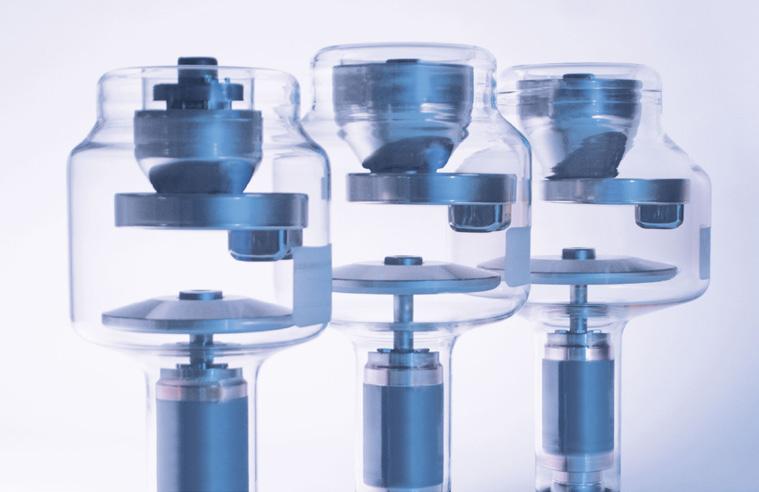

• One-year-old company with over 100 years of experience manufacturing and supplying X-ray tubes.
• High-quality components from IAE SpA, Europe’s premium X-ray tube manufacturer for 75 years.
Made in the USA with US and European components.
Email: info@X-RayAmerica.com
Phone: 1.854.999.6888
Global: IAE.it
US Headquarters: X-RayAmerica.com

786-797-0356
122
US:
Densitometers,
BUY | SELL | RENT | PARTS | SERVICE Helping healthcare get connected with the best radiology equipment. Replacement X-ray tubes for Radiography,
And Mammography systems
www.medilabglobal.com 12901 S.W.
Ave #102 Miami, FL 33186 CONTACT
We provide high quality pre-owned imaging equipment, parts and service to the healthcare industry world-wide. Carrying a variety of imaging such as MRI, CT Scanners, C-Arms, Mammo Units, Bone
X-Rays and much more based in Miami, FL.
R/F, Mobiles, C-Arms,
Quality
Value
Warranty
Premium
Exceptional
Impressive
Contact us at: X-Ray America, LLC
ICEMAGAZINE 21 THEICECOMMUNITY.COM
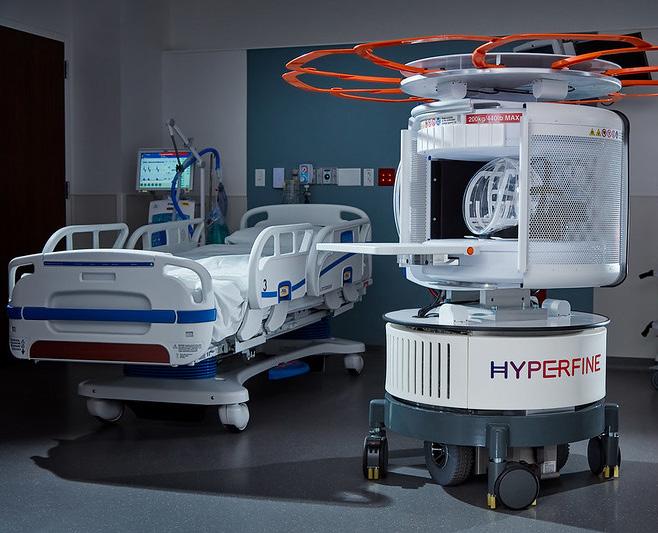
HYPERFINE LAUNCHES AI-POWERED BRAIN IMAGING SOFTWARE
Hyperfine Inc. has announced the launch of the AI-powered eighth generation of Swoop system software. The software’s diffusion-weighted imaging (DWI) AI denoising feature received FDA clearance in October 2023, and it has been rolled out at select sites over the past several weeks through a limited market release. The latest software improves Swoop system image quality and introduces valuable ease-of-use features, including a real-time aid for more precise patient loading and positioning and a streamlined image upload process.
With CE and UKCA certifications for this latest software, Hyperfine Inc. is positioned for future international expansion,
bringing the Swoop system to a broader global market.
“Our latest AI-powered software, the eighth generation of our proprietary software platform, embodies our commitment to supporting clinicians in critical decision-making,” remarked Tom Teisseyre Ph.D., chief operating officer of Hyperfine Inc. “Our focus on image quality with this latest software has been on the DWI sequence, which is key in stroke imaging. Since its first FDA clearance in 2020, we’ve been dedicated to continually enhancing image quality and workflow efficiencies to define best-in-class, user-centric, ultra-low field MR brain imaging.”
For more information, visit hyperfine.io.
NEWS
ADVANCING THE IMAGING PROFESSIONAL 22 ICEMAGAZINE | MARCH 2024



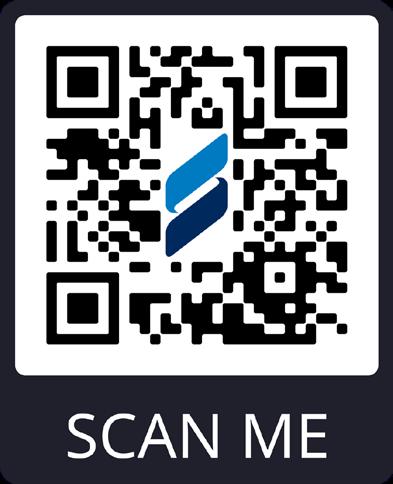

No-Risk Transducer Repair Services If your ultrasound transducer is deemed beyond repair at any point, you will not be charged for the repair attempt. www.mysummitimaging.com
RSNA PUBLISHES JOINT STATEMENT ON USE OF AI TOOLS
RSNA and four other radiology societies from around the world have issued a joint statement on the development and use of artificial intelligence (AI) tools in radiology. The statement was published in RSNA’s journal, Radiology: Artificial Intelligence.
“AI tools are an essential part of radiology’s future,” said RSNA President Curtis P. Langlotz, M.D., Ph.D. “RSNA is committed to supporting the responsible use of AI in medical imaging through all three pillars of its mission: education, research and technological innovation.”
“Developing, Purchasing, Implementing and Monitoring AI Tools in Radiology: Practical Considerations. A Multi-Society Statement from the ACR, CAR, ESR, RANZCR and RSNA” was drafted by representatives of RSNA, the American College of Radiology, the Canadian Association of Radiologists, the European Society of Radiology and the Royal Australian and New Zealand College of Radiologists.
“This statement from RSNA and other leading radiology societies provides important guidance for our profession,” said Charles E. Kahn Jr., M.D., M.S., editor of Radiology: Artificial Intelligence. “It identifies key concerns that must be addressed to develop, implement, and monitor AI systems



for clinical practice.”
AI carries the potential for unprecedented disruption in radiology with the possibility of both positive and negative consequences. The integration of AI in radiology could revolutionize health care practices by advancing diagnosis, quantification and management of multiple medical conditions. However, with the expanding availability and capabilities of AI tools in radiology comes an increasing need to critically evaluate claims for AI’s utility and to differentiate safe product offerings from potentially harmful or fundamentally unhelpful ones.
The multi-society paper defines the potential practical problems and ethical issues surrounding the incorporation of AI into radiology practice.
In addition to delineating the main points of concern that developers, regulators and purchasers of AI tools should consider prior to their introduction into clinical practice, the statement also suggests methods to monitor the tools for stability and safety in clinical use, and to assess their suitability for possible autonomous function.

NEWS
- New Windows 10 Platform with Dynamic Digital DR Panel - Eliminates the OEM Saturn Windows 95 Platform - Dose Reduction - HIPAA Compliant, 510k approved. - Fluoroscopy digital recording loops for MBS studies - Upgrade Provided to your Proven R/F System in 4 days. - Complete Refurbished Systems Available Imaging Chain issues with your GE Legacy or Precision-500 R/F systems? Upgrade system with Insight DRF Enhanced BRIAN.CARLOCK@PREMIERIMS.COM | 800.722.1991 RADONMEDICALIMAGING.COM ADVANCING THE IMAGING PROFESSIONAL 24 ICEMAGAZINE | MARCH 2024
FDA CLEARANCE OF BUTTERFLY IQ3 ANNOUNCED
Butterfly Network Inc. recently announced the FDA clearance of its next-generation handheld point-of-care ultrasound (POCUS) system, Butterfly iQ3. The new device is the company’s third iteration of the world’s first semiconductor-based single-probe, whole-body ultrasound system. Butterfly iQ3 features a brand-new ergonomic design and will deliver double the data processing speed for optimized image resolution, sensitivity and penetration, as well as faster 3D capabilities to power novel, automated image capture modes: iQ Slice and iQ Fan.
“Butterfly iQ3 is the turning point for digital ultrasound. Butterfly started a revolution in ultrasound when we commercialized the world’s first fully digital handheld ultrasound in 2018, and subsequently, iQ+ in 2020,” said Joseph DeVivo, Butterfly Network’s president, chief executive officer and chairman. “Over 145,000 customers have since realized the value of our chip-based ultrasound. With iQ3, the revolution takes full charge. Physicians across disciplines now rank our overall image quality at least equal to traditional piezoelectric-based handhelds, and our new digital capabilities are designed to make ultrasound more accessible and approachable than ever before.”

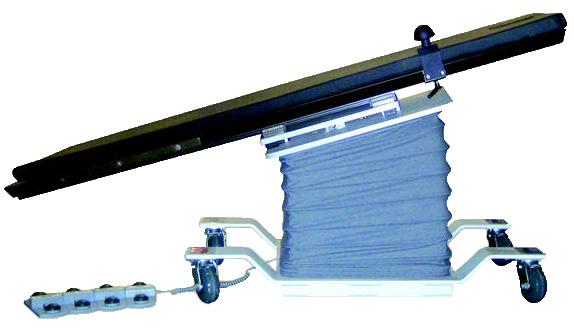

WE BUY AND SELL PRE-OWNED MEDICAL IMAGING EQUIPMENT. ALL MANUFACTURES & MODALITIES CUSTOMERS FIRST SINCE 1987 TOSHIBA • GE • PHILIPS • SIEMENS AND MORE! Website: www.InternationalXrayBrokers.com Email: admin@intxray.com Call: 508.730.9544 or 508.559.9441 DISTRIBUTOR FOR CUSTOM BUILT SURGICAL TABLES REFURBISHED G.E. AMX PORTABLES AND OEC C-ARMS THEICECOMMUNITY.COM ICEMAGAZINE 25
A COOL SERIES FOR HOT TOPICS
WEBINAR ADDRESSES LEADERSHIP EXHAUSTION
The latest ICE webinar “Leadership Exhaustion – Maintaining Your Sanity in 2024” by Nicole Dhanraj, Ph.D., SHRM-SCP, GPHR, CPPS, CSSBB, PMP, CRA, R.T (R)(CT)(MR)(FAHRA), reviews the prevalence of burnout/exhaustion in radiology and its impact on leadership. The webinar is approved for 1.0 ARRT Category A CE credit by the AHRA.
ICE
Dhanraj described leadership exhaustion and burnout, how to identify burnout/exhaustion triggers and strategies for self-care and resilience.
She also shared how to use techniques for managing stress and building resilience during challenging times.
Attendees were asked “Why do you join ICE webinars?”
grateful for the opportunity to participate,” said Nancy Godby, director of radiology, Cabell Huntington Hospital Inc. - Marshall Health Network.
“Interesting and relevant content. Effective speakers!” said Alpana Patel, Manager, interventional radiology and neuroendovascular surgery, UCSF Health.
“For my professional training, to better understand certain expectations from the profession of clinical engineer to be able to tell my students what is useful for them in their job,” said Calin Corciova, associate professor, medical bioengineering faculty.
A COOL SERIES FOR HOT TOPICS
“ICE always provides quality relevant sessions and I am
“To stay abreast of changes in teh field and learn how other colleagues are handling the changes,” said Peggy Fabrizio, a manager at Good Shepard Rehabilitation Hospital. •
For more information, visit ICEwebinars.live.
STAFF
REPORT
NEWS
ICE
ADVANCING THE IMAGING PROFESSIONAL 26 ICEMAGAZINE | MARCH 2024
THE SERIES EVERYONE IS TALKING ABOUT
ICE Magazine connects with industry leaders to provide top-quality educational opportunities through its monthly webinar series

FOR MORE INFORMATION, VISIT ICEWEBINARS.LIVE.
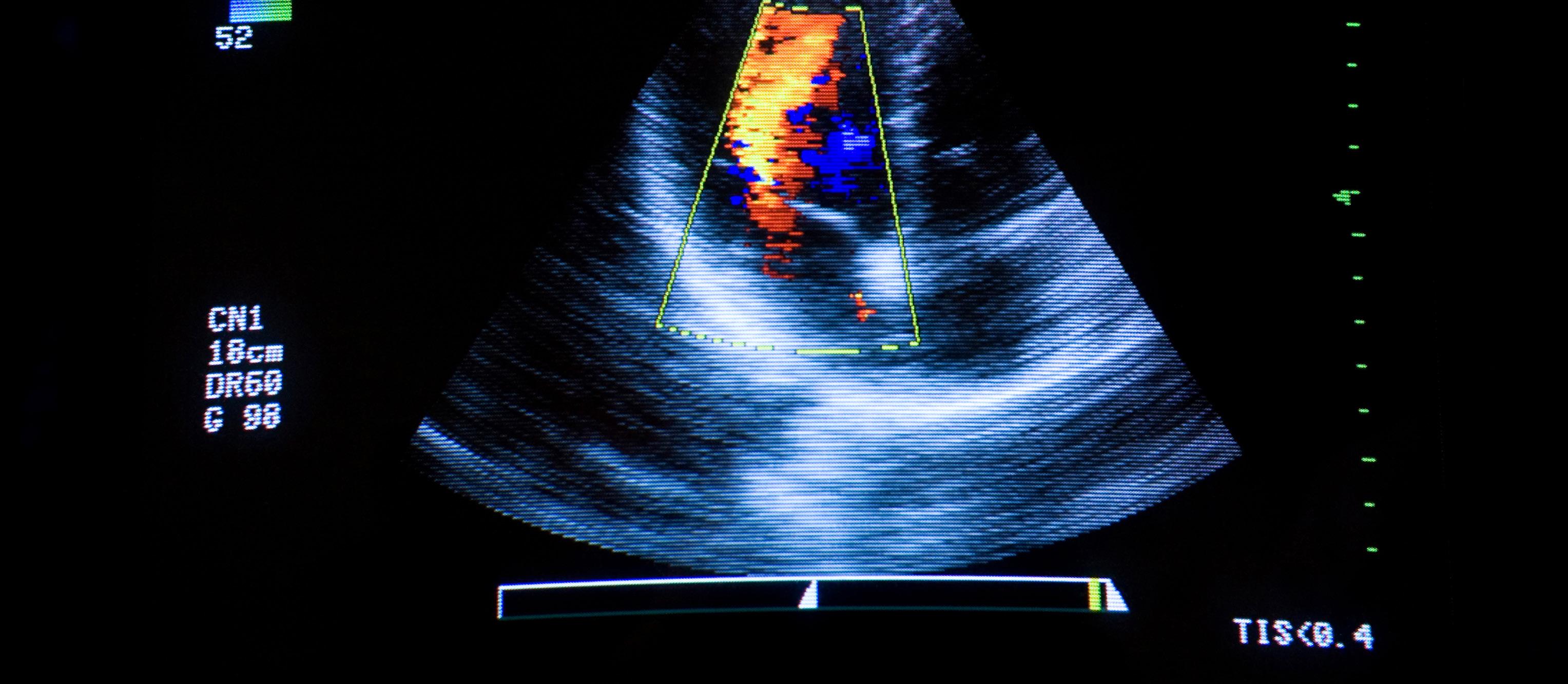
Market Report
ULTRASOUND MARKET’S GROWTH CONTINUES
STAFF REPORT
Several reports from research firms and a number of press releases all predict continued growth of the diagnostic ultrasound market.
“In the near future, the ultrasound industry is poised for remarkable advancements, revolutionizing medical diagnostics and health care practices,” a PR Newswire release states. “Rapid technological innovations in ultrasound machines will enable higher resolution imaging, real-time 3D visualization, and enhanced portability, making them more accessible to remote and underserved areas. AI-driven algorithms will play a crucial role in automating image analysis, expediting diagnoses, and improving accuracy. Additionally, miniaturization and wearable ultrasound devices will empower patients to monitor their health in real-time, ushering in a new era of personalized medicine. As the cost of ultrasound technology decreases and its applications expand, we can expect a surge in adoption across various fields, from obstetrics and cardiology to musculoskeletal and point-ofcare settings, ultimately enhancing patient outcomes and transforming the landscape of modern health care.”
The ultrasound market (in terms of revenue) was estimated to be worth $8.5 billion in 2023 and is poised to reach $11.6 billion by 2028, growing at a CAGR of 6.3% from 2023 to 2028 according to a new report by MarketsandMarkets. The major factors driving the growth of this market include rising patient population, various chronic diseases, and techno-
logical advancements along with the increasing adoption of ultrasound for diagnostic imaging.
Based on end user, the ultrasound market is segmented into hospitals, surgical centers, diagnostic centers, maternity centers, ambulatory centers, research and academia and other end users. The hospitals, surgical centers, diagnostic centers segment accounted for the largest share of the market in 2022. Factors attributing to the share of this particular segment are increasing cancer incidences and increasing number of dermatological surgeries performed in hospitals and clinics are driving the growth of this segment, the report adds.
The Asia Pacific ultrasound market is estimated to register a significant growth from 2023 to 2028. The increasing patient population, rising geriatric population, rapid economic growth and increasing disposable income are driving market growth in APAC countries. This region is having a rise in health care investment and expenditure, offering significant growth opportunities for the key players, the release states.
Acumen Research and Consulting also predicts market growth.
“The global diagnostic ultrasound market size accounted for $7.2 billion in 2021 and is projected to occupy a market size of $11.4 billion by 2030 growing at a CAGR of 5.3% from 2022 to 2030,” Acumen reports.
Mordor Intelligence reports expansion of the U.S. ultrasound market in coming years.
“The United States ultrasound devices market size is estimated at $2.95 billion in 2024, and is expected to reach $3.86 billion by 2029, growing at a CAGR of 5.48% during the forecast period (2024-2029),” the report states. •
PRODUCTS ADVANCING THE IMAGING PROFESSIONAL 28 ICEMAGAZINE | MARCH 2024
Product Focus
Ultrasound Systems 1

GE HEALTHCARE LOGIQ E10 Series
GE HealthCare’s flagship LOGIQ E10 Series Ultrasound provides clinicians with capabilities for full body imaging, leveraging the power of AI to drive workflow efficiency and advanced tools to help support clinical decisions. LOGIQ ultrasound systems can be used to scan a wide range of patients including those in the following care areas: radiology, vascular, breast, interventional, MSK, cardiac, and OB/GYN. LOGIQ systems are equipped with comprehensive and personalized tools for a seamless workflow and increased efficiency.
2
FUJIFILM

FUJIFILM Healthcare Americas Corporation’s ARIETTA 750 DeepInsight, a premium diagnostic ultrasound solution that uses Fujifilm’s DeepInsight technologies to increase image clarity and reproducibility, even for the most challenging views. DeepInsight uses cognitive technology algorithms to distinguish between echo signals and electrical noise, selectively removing noise that can obscure tissue signal, while still retaining important acoustic speckle signals. This results in high-quality images, even from deep regions of the body, to support more accurate ultrasound examinations. The system’s software suite is designed to solve common workflow challenges by automating common operations such as Doppler gate placement. The system’s eFocusing Plus uses a non-traditional transmit/receive technique to eliminate focal zones, shorten exam times and uniformly focus at all depths.
listed in no
*Disclaimer: Products are
particular order.
ARIETTA 750DI Ultrasound System ICEMAGAZINE 29 THEICECOMMUNITY.COM
RS85 Prestige
The RS85 Prestige ultrasound system offers novel diagnostic features and advanced intelligence technologies to assist sonographers and other health care professionals to diagnose with confidence and ease. Designed for scanning performance, the system delivers consistent image clarity, depth of penetration and sensitivity to perfusion of blood flow. At the core of the image quality is Crystal Architecture, which combines advanced beamforming (CrystalBeam), sophisticated image processing (CrystalPure) and advanced S-Vue transducers to produce clear, uniform, high-resolution images. The RS85 Prestige is empowering ultrasound professionals with diagnostic confidence on even the most challenging of patients.
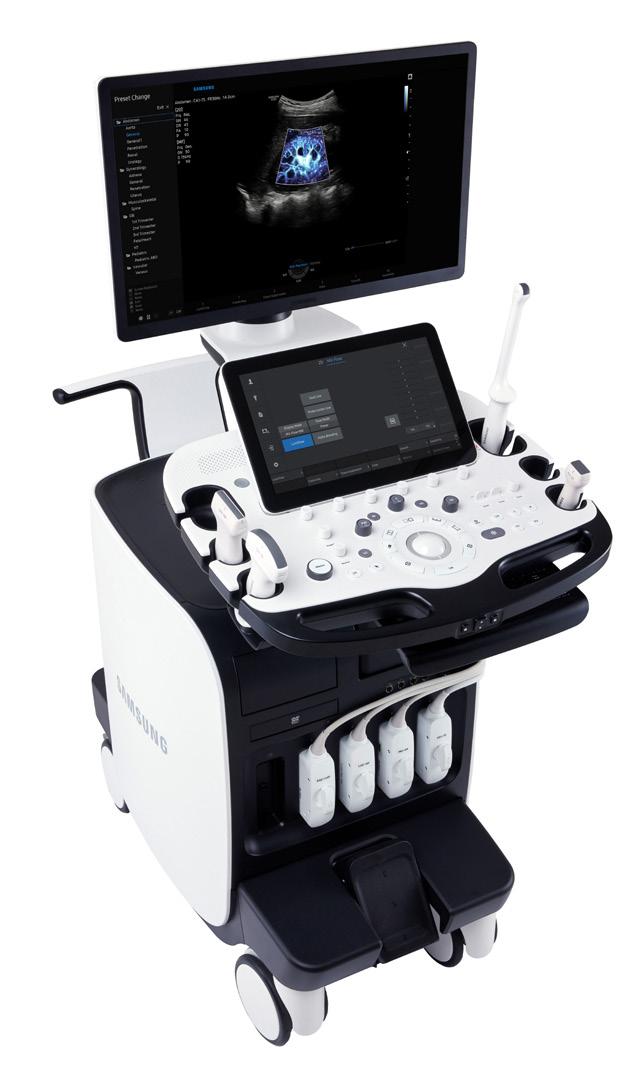
SIEMENS HEALTHINEERS ACUSON MapleUltrasound System

Siemens Healthineers ACUSON Maple is a powerful, versatile and affordable ultrasound system that enables rapid diagnosis and assessment in all clinical settings. Artificial intelligence (AI)-powered features optimize everyday clinical performance for users of all skill levels. Powered by ACUSON technology from the company’s established portfolio, the ACUSON Maple is designed for the clinician who needs a workhorse ultrasound system that supports a diverse range of ultrasound use cases. Lightweight, portable, and battery-powered, the ACUSON Maple is ideal for emerging markets, small hospitals, outpatient centers, private practices and urgent care centers. Designed for versatility, the ACUSON Maple supports 15 transducers and has 25 advanced features that enhance usability and streamline workflow. An integrated battery enables up to 75 minutes of unplugged system scanning. The system’s suite of AI-powered tools empowers clinicians to improve efficiency by increasing consistency in repetitive tasks. For obstetrics and gynecology (OB/ GYN) imaging, the Auto OB feature leverages machine learning to automatically calculate the fetus’s age and weight. For cardiac imaging, the eSie Measure feature uses machine learning to automatically perform cardiac measurements during a routine echocardiography exam. The ultrasound system is cleared by the U.S. Food and Drug Administration, CE marked in the European Union, and is available globally.
PRODUCTS
SAMSUNG
30 ICEMAGAZINE | MARCH 2024 4
3
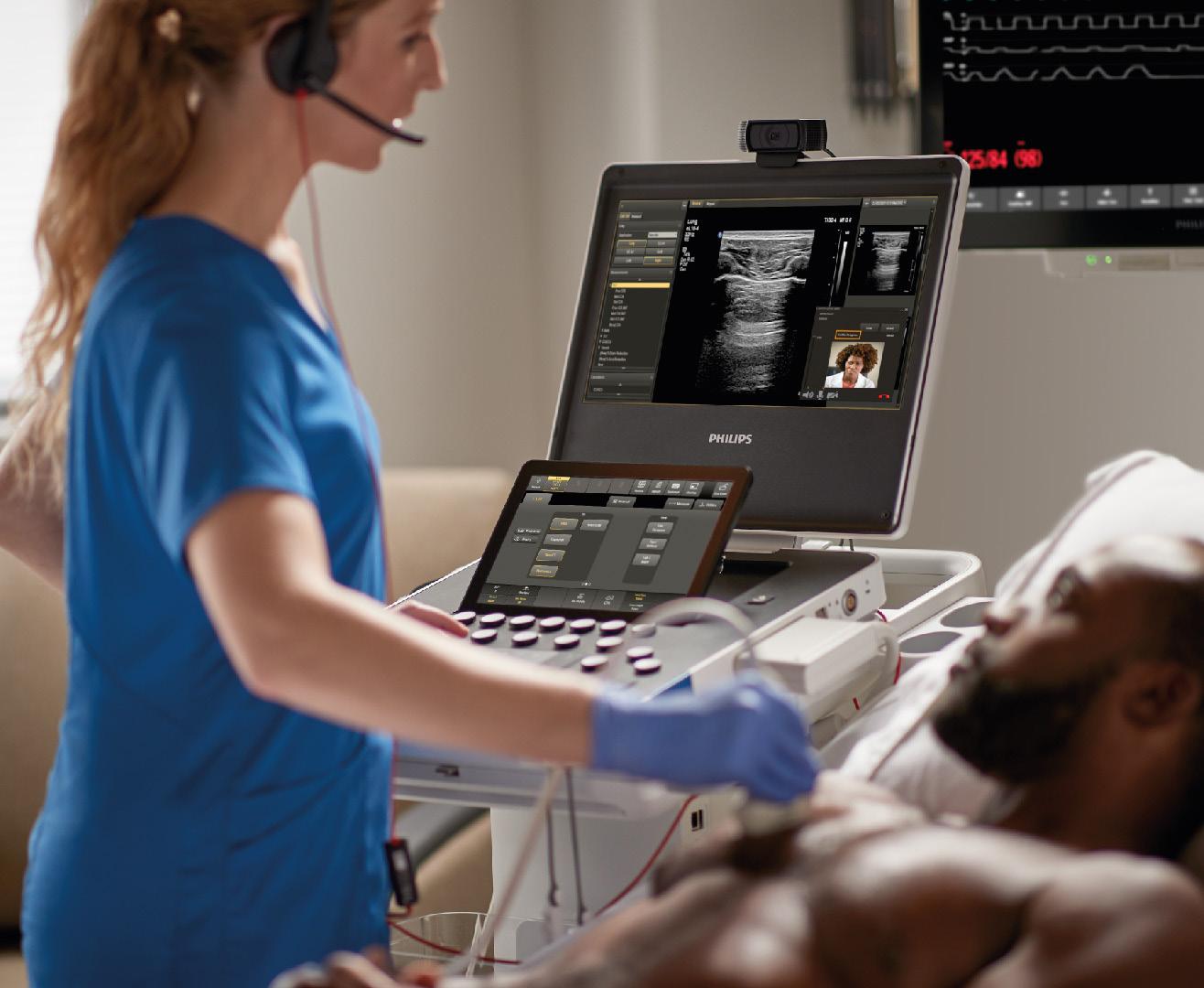
PHILIPS 5000 Series 5
Replicating the intuitive user interface and workflow of Philips’ cartbased systems EPIQ Elite and Affiniti, and offering full compatibility with these systems’ transducers, Philips Ultrasound Compact System 5000 Series supports an easy learning curve for users. Designed for shared service capabilities across specialties including cardiovascular, obstetrics and gynecology, point of care, and general imaging, the Ultrasound Compact 5000 Series system helps meet the needs of multiple clinical segments. Designed for portability, the Compact system can be configured with an optional battery allowing for 2.5 hours of scanning time and 20% faster power-up capability to quickly ready the system at the patient’s side when every second counts. Additionally, the new system features 33% fewer hard keys on the console, and a fully sealed control panel for easy disinfection and cleaning protocols. •
ICEMAGAZINE 31
SPONSORED BY:
DIRECTOR’S CIRCLE
Ultrasound is perhaps the most used imaging modality at health care facilities in the United States and its popularity continues to grow. ICE Magazine reached out to imaging leaders to find out more about ultrasound in this month’s Director’s Circle article. Leaders sharing their insights are:
• UC Health Vice President of Operations, Becky Allen
• University of Texas Medical Branch Senior Imaging Manager-Ultrasound and CT, Julie Dueitt
• UT Southwestern Imaging Systems and Services Technical Manager, Kim Pongsatianwong
• University Hospitals of Cleveland Radiology Manager, Amy Rutledge.
Q: WHAT ARE THE BIGGEST CHALLENGES THAT SONOGRAPHERS FACE TODAY?
Allen: The biggest challenges sonographers face today is the number of scans per sonographer that’s expected and the inpatient turnaround time from time ordered to time of final dictation within 24 hours. These challenges can lead to increased stress and burnout for our team members. Sonography is such a technologist dependent modality; we understand how important it is to provide flexible scheduling and work/life balance to keep the best of the best sonographers. We are fortunate to have many long-term sonographers.
Dueitt: Although sonography can be a very rewarding career, there are significant challenges that sonographers face. In fact, most of the challenges that sonographers face can be linked to the greatest challenge of all which is bodily harm – both mentally and physically. The top three challenges would be on-call abuse, performance of
unnecessary exams, and ergonomics issues from scanning position, pressure and repetitive motion resulting in musculoskeletal injury. In fact, by their third year working in ultrasound, 45% of sonographers have musculoskeletal injury symptoms. In addition, many sonographers take calls all night long and are still expected to work the next day. This lack of sleep or broken up sleep can create a mental fog which not only affects the sonographer but has the potential to affect the patient. Lastly, on a normal day at work sonographers perform unnecessary exams (exams ordered after another testing method has already answered the question) and portable exams putting more physical stress on their bodies.
Pongsatianwong: One of the biggest challenges that sonographers face today is keeping up with rapidly advancing ultrasound technology and equipment. Manufacturers are designing innovative features and functionalities that are elevating the use of ultrasound in many exciting new ways to assist with diagnosing patients. It can be difficult to find the time to learn the latest equipment and techniques when there is a demanding workload with tight schedules. Meeting the demand for ultrasound services while maintaining accuracy and high image quality can be stressful in situations where there exists difficult patient body habitus and pathologies. However, making time to incorporate these new developments can help to streamline workflows and increase the throughput of patients.
Rutledge: One of the most significant challenges that the sonography profession faces is the increasing number of sonographers needed to address the changing demographics of the patient population. We have an aging
INSIGHTS
ADVANCING THE IMAGING PROFESSIONAL 32 ICEMAGAZINE | MARCH 2024

BECKY ALLEN

UC HEALTH

JULIE DUEITT
UNIVERSITY
OF TEXAS MEDICAL BRANCH
population which coincides with an increased number of hospital admissions and directly impacts the utilization of diagnostic imaging. To manage demand in the post-COVID era, the profession will need an influx of new sonographers.
Q: WHAT PERCENT OF YOUR VOLUME IS PERFORMED VIA PORTABLES?
Allen: Twenty-five percent of the volume for the department is via portable mode. All ICU patients and NICU baby exams are performed via portable to keep them in the appropriate environment for healing. We try to limit the transport of patients from these areas as we know how difficult it is transporting patients and the resources involved.
Dueitt: Currently, about 10-15% of our volume is performed via portable ultrasound. This is higher than average when compared to many other facilities our size. Interestingly, this increase in portable exams is due to issues with the transportation of patients, not true need for the exam to be performed portably. If we only performed necessary portables that percentage would easily fall to 3-5%. When our transportation system cannot get patients to us in a timely manner, the sonographers opt to go portable in an effort not to delay patient care. Unfortunately, bringing a higher chance of musculoskeletal injury to themselves.
Pongsatianwong: Our hospital-based sonographers perform about 35% of our total inpatient volume via portables. Most of these are bedside exams, and we also provide ultrasound services during procedures in the OR and in post-op recovery rooms. We take into consideration the physical strain that performing portable examinations can have on a sonographer’s ability to adhere to proper ergonomics when setting guidelines on when to perform portable examinations.
Rutledge: University Hospitals Cleveland Medical Center performs approximately 13% of our ultrasound examinations portable. It is an average of 465 per month.

KIM PONGSATIANWONG
UT SOUTHWESTERN
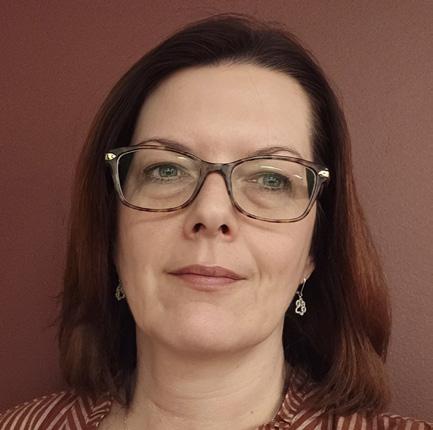
AMY RUTLEDGE
UNIVERSITY HOSPITALS OF CLEVELAND
Q: HOW DO YOU ADVISE WHICH VENDOR TO CHOOSE WHEN THE ER WANTS ONE VENDOR, THE RADIOLOGIST ANOTHER AND THE TECH YET ANOTHER?
Allen: We have a system wide POCUS committee that is responsible for setting the expectations on point-of-care purchases and use of ultrasound equipment within the system. The team met and invited all professionals across the system to trial multiple vendors. At the end of the trial, each provider voted on the top vendor for POCUS equipment. We then signed a strategic agreement with the vendor that had the most votes. This way, we standardized our POCUS fleet. As more and more providers are using ultrasound as a diagnostic tool, it was important to our system to have a standardized approach on how we purchase and use the equipment.
Dueitt: Choosing which vendor to go with is affected by several factors. Image quality, cost and perks are all relevant. Largely, image quality is comparable between most major vendors. Radiologists, sonographers and others may have preferences, but when it comes down to diagnostic images all major vendors deliver that. This leads me to put more emphasis on what the vendor is willing to give automatically without extra upgrades, and at what final cost. In this economy, and just like any other important purchase, you want more bang for your buck. My decisions always come down to the machines that come with the most options without extra purchase that will benefit our patients the most.
Pongsatianwong: When choosing a new machine to purchase, we solicit input from our radiologists and sonographers after demoing machines from several vendors. Our facility currently has 50 ultrasound units from 3 different vendors. These units include different models, software levels, and software functionalities. While our radiologists and sonographers have their personal preferences, it is expected that all our sonographers are competent using any of the equipment within our fleet. We typically do not encounter requests for specific vendors, but rather
ICEMAGAZINE 33 THEICECOMMUNITY.COM
requests for specific tests. We have strategically installed software packages for tests like elastography and contrast-enhanced ultrasound on our machines based on clinic location and vendor availability.
Rutledge: The vendor selection process requires significant research and consideration. We have a strategic partnership with multiple vendors, eliminating much of the leg work. The configuration of the units purchased is discussed though our modality triad, which is a combination of radiologists, leadership and modality supervisors.
Q: WHAT WERE SOME SURPRISES FROM YOUR MOST RECENT ULTRASOUND PURCHASE?
Allen: We were surprised by the ease of use and ergonomics of the most recent ultrasound purchases. The units are not the large, bulky hard to maneuver units from before. The security availabilities on the units were also a nice surprise so easy to lock down and can badge tap to get access to use. This allows us to see who is using the equipment.
Dueitt: I had two major surprises in my most recent ultrasound purchase. The first is that vendors, specifically the vendor I chose, are working much harder to ensure their service and new software patches are part of the package and not having to be an extra purchase. Of course, there are things they can’t help with without that service agreement but this specific vendor made it part of the deal that their new software upgrade that would be coming out three months later would automatically be put on our machines. They listened to what we felt was important and met us halfway. The second surprise I had was that a perk that I felt would be highly beneficial fell flat when implemented. This perk required buy-in from myself, the sonographers and the radiologists. Unfortunately, we failed to prioritize it’s possibilities and it didn’t work for us. That ultimately came down to myself and the radiologists having to log into an additional program each day as well as the sonographers logging into it on the machine and being comfortable on camera. This proved to be too much for us at this time.
Pongsatianwong: Our most recent ultrasound purchase was to upgrade our high-level disinfection systems. The improvement in the user interface and advancement in transducer tracking abilities have greatly streamlined our workflows, so that the technologists can spend more time on patient care and less time on documentation.
Rutledge: The technological advances made by our vendor partners were a pleasant surprise for me during our last ultrasound purchase. Advances such as one-touch image
optimization and automation driving workflow efficiencies reduce scan time while AI supports advanced tools to assist in clinical decisions. These advanced technologies support our sonographers and radiologists while improving the care we provide our patients.
Q: HOW ARE YOU MANAGING ULTRASOUND PROCEDURE GROWTH AND STAFFING SHORTAGES?
Allen: We have had to turn to agency sonographers to help manage our staffing shortages and volume. We have been successful in having really good agency sonographers for the past year as we have been limited on the number of qualified candidates applying. This just recently changed, and we were fortunate to hire three new sonographers. I am hoping this is the change of candidates in the pipeline moving forward.
Dueitt: As more institutions begin tightening the belt financially and holding patients responsible for co-pays and deductibles up front, the use of ultrasound has been growing because it is so much cheaper than CT or MRI. The way we have managed this increase in procedures has been to extend outpatient hours during the week and to open outpatient hours on the weekends. Managing staffing shortages has taken a little more outside-the-box thinking. The pandemic really changed the health care landscape in regard to staffing. Many sonographers left their longterm jobs to take travel assignments because the money was just too hard to pass up. Finding people to fill open positions became a challenge. We have been successful in cross-training from within for CT and MRI but this isn’t as feasible for ultrasound. However, we have been able to cross-train some general sonographers into vascular procedures. I am a strong advocate for teaching so we always have students from the surrounding colleges. Keeping in contact with newly graduated students allows me to constantly have a pool to draw from since most ultrasound travel agencies prefer not to hire new graduates.
Pongsatianwong: We have employed creative scheduling options, including part-time, per-diem, and contract sonographers to optimize coverage during peak demand periods and difficult-to-fill shifts. We have also established partnerships with nearby ultrasound educational programs to provide clinical placements for students which will help address staffing shortages in the long term by contributing to the education and training of future sonographers. We introduced an imaging tech trainee position at our hospital, enabling us to bring students on board and initiate their institutional onboarding before they graduate. They continue training under the supervision of a registered technologist, and it has proven to be a win-win situation since we implemented the program.
INSIGHTS ADVANCING THE IMAGING PROFESSIONAL 34 ICEMAGAZINE | MARCH 2024
Rutledge: This is a complex time in health care where we have to manage increasing volumes while combating staffing shortages. One area we have tried to concentrate our efforts is employee retention. Our organization recently implemented additional regular compensation (ARC) for Cleveland Medical Center, the quaternary care academic medical center. Leadership recognizes that the academic medical center has the most acute patient population along with some of the highest vacancy rates. These factors impact the retention of current caregivers and recruitment of new team members. We have also created unique programs where we offer students in imaging modalities a sign on bonus, which pays out when they reach milestones in their careers.
Q: ERGONOMICS HAS BECOME A BIG ISSUE WITH ULTRASOUND. HAVE YOU DONE ANY SPECIAL TRAINING OR PURCHASED ANY SPECIAL EQUIPMENT?
Allen: We have not had an issue with ergonomic injuries to our sonographers. We have purchased ergonomic chairs a few years ago. I think the newer equipment has also helped with this as well.
Dueitt: We created a process improvement plan to help combat musculoskeletal injury in our sonographers. I purchased exercise bands that stay in the department so that the sonographers can stretch and exercise between patients. The suggested exercises are also posted in the department as a guide specific to strengthening the pertinent muscle groups either with exercise bands or sitting in a desk chair. In addition, we purchased ergonomic sonographer scan chairs that give support where most needed for the sonographer.
Pongsatianwong: We highly value a vendor’s ergonomic features when evaluating new equipment for the department. Height adjustability, transducer and cord weights, and moveability of the console are some of the qualities we consider as they greatly impact the effect on a sonographer’s body. To assist with venous reflux studies, we have an augmentation device to decrease the repetitive motions necessary for the exam. We also annually host a CME for our staff about proper ergonomics and how to prevent musculoskeletal-related injuries.
Rutledge: The causes of work-related musculoskeletal injuries among sonographers are multifactorial, thus, require multiple varied solutions to reduce the risk. Having an ergonomic workstation plays a major role in mitigating these injuries, ultrasound systems with a floating user interface and a full range of motion allows sonographers and physicians to position the operator’s console at an ergonomic height and position. Backlighting on keyboards used to reduce eyestrain. Scheduling a variety of exam types helps reduce repetitive motion injuries. Also,
education for sonographers is key. We recently offered a vendor sponsored educational class on ergonomics in sonography and it has been a topic at our annual ultrasound symposium.
Q: WHAT ELSE SHOULD ICE MAGAZINE READERS KNOW ABOUT ULTRASOUND?
Allen: Ultrasound is a fantastic modality that can be used for many reasons. It is essential to have a plan for the POCUS needs within your facilities. Standardize your equipment and make sure to have a process for credentialing providers, space to store those images and proper billing. For radiology departments, the key to a successful ultrasound department is to hire the absolute best sonographers. Without top notch sonographers, it makes it extremely difficult on the radiologist.
Dueitt: That’s a dangerous question to ask a sonographer! There are so many things! Most importantly, sonographers don’t “just take the pictures.” Ultrasound is a highly user-dependent modality in which the sonographer plays a lead role in the actual diagnosis which stands apart from other modalities. I think everyone should also know that ultrasound is not only about looking at babies in the womb, as awesome as that part is. Ultrasound is used to provide diagnostic information from almost every part of the body from head to toe and is in a state of constant change. When I first was a sonography student, we were told that we would never look at bone, lung or intestine. Now, 17 years later, ultrasound can identify fractures in bone, pneumothorax, and can evaluate for inflammatory bowel disease.
Rutledge: The ultrasound profession is dynamic and ever changing. Medicine is constantly evolving, but medical imaging is advancing at a rapid pace as well. Advancing technologies, improved techniques and innovative best practices will allow this profession to experience continual growth.
Pongsatianwong: The continuous introduction of new innovative features and functionalities is revolutionizing the application of ultrasound in diagnosing patients. Developments in technology to decrease the limitations of ultrasound, such as those to lessen artifacts caused by bone and air, are in the works and uses for contrast enhanced ultrasound continue to be discovered. Because ultrasound is largely dependent on a sonographer’s skillset, it is vital for institutions to invest in the continued education of sonographers as our field continues its upward trajectory. •
This month’s article was sponsored by Innovatus Imaging. For more information on this company, visit innovatusimaging.com
ICEMAGAZINE 35 THEICECOMMUNITY.COM

ICE MAGAZINE ICE MAGAZINE Breaking News: THE FUTURE OF HTM JOBS IS HERE. htmjobs@mdpublishing.com for posting inquiries htmjobs.com to register today • A niche job board for the HTM and imaging communities powered by TechNation. • 2800+ actively looking biomedical and imaging professionals. » Completely free and confidential registration and application process.

MAGAZINE NEWS MAGAZINE NEWS
• The fastest growing HTM talent network in the country.
• 350+ open opportunities throughout the United States.
» A variety of posting options ranging from single-job postings to 12-month unlimited memberships.

“My HR department advertised on various government sites and our web site but we did not get a single applicant in over 120 days. Fairbanks Alaska is hard to recruit for but I took out an ad on HTM Jobs and got two good applicants in less than 30 days. I am hiring them both. Thanks HTM Jobs.”
Featured Employers: Agiliti, TRIMEDX, Kaiser Permanente, Renovo Solutions, MultiMedical Systems, SPBS, Inc., Blue Water Thinking, and more!
 - D. Anderson, Tanana Chiefs Conference
- D. Anderson, Tanana Chiefs Conference
Lengthening Life Spans for Diagnostic Imaging Equipment

COVER STORY
ADVANCING THE IMAGING PROFESSIONAL 38 ICEMAGAZINE | MARCH 2024
Whether owing to technological improvements, budgetary constraints, improved durability, modular design, or some combination thereof, the life cycles of diagnostic imaging equipment are lengthening. Within the past half-decade, the useful life of workhorse modalities like CT and MR alone have been extended by some two-anda-half years, according to industry watchers like IMV. As capital purchasing slows due to financial constraints, workflow optimization, and shifting business priorities, device manufacturers, servicers, and the technologists that operate them are starting to reckon with longer-lived imaging gear.
Murat Gungor, senior vice president of diagnostic imaging at Siemens Healthineers North America, attributes this extension of useful life to a number of factors, including more robust device construction, and modular designs that support frequent upgrades rather than total replacement. He also credits comprehensive service contracts and the availability of evergreen replacement components with keeping long-lived diagnostic imaging systems up and running, thanks to environmental and remote monitoring tools that warn of potential problems before they emerge to their fullest extent.
“I think the OEMs started to put much better mechanisms in place, technology-wise and from an IT perspective,” Gungor said. “In the eyes of the buyer, that’s a massive value.”
However, Gungor said he’s also
seeing operational and financial choices that are lengthening life spans of imaging equipment; namely, in the wake of the novel coronavirus (COVID-19) pandemic, constrained revenues are contributing to institutional decisions about where to make investments, if at all. Particularly, as growth and demand for outpatient imaging services swell, some health care institutions may hold off upgrades to their legacy locations and assets.
“The financial side of the house is always a tricky thing,” Gungor said, “especially for the last few years. Hospitals many may be in the red; money is definitely an issue. A big health care system may, rather than replacing its existing assets, focus its net purchases on growth locations.”
But he also cautions that a complete system replacement can only be staved off for so long, as legacy imaging systems eventually won’t be able to keep pace with the software and firmware computing upgrades that facilitate the newest imaging protocols and workflow applications.
“There’s a bit of risk-taking in picking the upgrade rather than the replacement route for your legacy assets,” Gungor said. “Depending on your strategy as a health system, you might rather prefer to keep that old MR and buy some of the new components – computers, coils, maybe some AI software on top – a short-term solution to get things going when you invest your real money on other growth initiatives.”
“Some of the upgrades on the systems could become a problem over time unless you completely change the hardware mechanism, and at that point, it becomes a cost-benefit ratio,” he said. “At
some point in time, the hardware of the old systems may not be sufficient to handle future upgrades, and those old MR magnets will need to be replaced. At some point in time, older parts won’t be capable of handling patient demand, and the only way to catch up is if you buy brand-new systems and locations.”
Radiologist Michael Recht, the Louis Marx Professor and chair of the department of radiology at NYU Langone Health in New York, New York, said longer-lived diagnostic imaging equipment owes to the cyclical nature of imaging technology itself. In the earlier days of MR, rapid development in the capabilities of newer systems, and the computing power that underpinned them, motivated health care institutions to invest in the latest and greatest devices so as to keep pace with functionality. After years of generational growth, things have leveled off, he said.
“It reached a point where machines got better,” Recht said. “They lasted longer; the iterations were less significant. You could add a package to get more capabilities; you didn’t have to upgrade the gradients because the gradients were really good.”
However, Recht believes the additional image reconstruction capabilities of integrated artificial intelligence (AI), like deep machine learning, are ushering in a new era of generational changes with which legacy diagnostic imaging systems simply won’t be able to keep pace.
“There are periods of time where there’s rapid development, and then you reach a period where things are really stable,” he said. “Then there’s going to be another round of incredible innovation, where the capabilities change, and
COVER STORY
ICEMAGAZINE 39 THEICECOMMUNITY.COM

“As each modality goes through these innovation cycles, you’re going to need to replace this equipment to maintain state-of-the-art status. We’re not going to replace the machine just to say we’re replacing the machine. I think we have to judge whether it is increasing our patient care by increasing our diagnostic capability.” – Michael Recht
you’re all going to change again, and it varies from modality to modality.”
“As each modality goes through these innovation cycles, you’re going to need to replace this equipment to maintain state-of-the-art status,” Recht said. “We’re not going to replace the machine just to say we’re replacing the machine. I think we have to judge whether it is increasing our patient care by increasing our diagnostic capability.”
Some purchase upgrades are reflective of specific functions that unlock additional treatment modalities, like cardiac CT, or those that deliver a better end product, like temporal resolution improvements. Other developments support new models of workflow. Recht pointed to the shorter upgrade cycle of ultrasound equipment versus that of CT, as services like pointof-care ultrasound (POCUS) and streaming ultrasound have enabled radiologists to deliver studies at the patient bedside, or read them remotely.
“We have a number of remote radiologists in our group,” he said. “People like to read at home, even the people who are onsite. We use streaming ultrasound to let people watch what’s happening; we do remote breast imaging. It was important to get equipment that could do that.”
Similarly, Recht said, the ability to add AI deep learning image reconstruction to most of the exams done at NYU Langone has dramatically reduced the length of time it takes to conduct them.
“Our knee exams are four minutes and five seconds on average,” he said. “We’re incorporating that into our neuro and body imaging as well. If I’m getting machines that give us a four minute exam, I’m going to certainly upgrade. Techs love it because they don’t have to work as many weekends and nights.”
Recht also points out that other measures that can improve imaging workflow don’t necessarily need to involve wholesale system upgrades. Efficiencies can be derived from improving equipment utilization rates with staffing measures, facility design and intelligent scheduling mechanisms.
“We use dockable tables and prep rooms, so the turnaround time for our patients is two to three minutes at a lot of centers,” Recht said. “You need to get the equipment to do that, but that is absolutely the way to go. We staff our techs much higher compared to most places because we go much faster; we don’t have a lot of techs leaving because they work as a team.”
“I think staffing correctly, using architecture, and working on workflow really converts radiology into
a vital resource for the institution, and supports the institution financially,” Recht said. “You just have to run it like any other operation: you have to get involved in scheduling, workflow, and understanding how to make the techs’ jobs easier and the quality more consistent.”
At the University of Texas Medical Branch in Angleton, Texas, Senior Imaging Services Manager Susan Young said that diagnostic imaging equipment purchases are contemplated most often in terms of the existing functionality of the current equipment and the benefit to patients of upgrading. In community hospitals like hers, equipment life cycles extend as far as they can with the aid of improved service support, better staff and organizational leadership.
“There’s always something new that offers something that maybe you don’t have, but you have to step back and say, ‘What are you offering me for this cost that I can’t already do?’ ” Young said. “We have to really weigh the benefit for our patient and for us. If we can keep something working safely with best outcomes for our patients, why don’t we keep what we have?”
“I’m a small hospital in a larger system; we’re all asking for something,” Young said. “Being a smaller hospital, getting what we need here is challenging. There’s nothing in
COVER STORY
ADVANCING THE IMAGING PROFESSIONAL 40 ICEMAGAZINE | MARCH 2024
imaging that’s not a large purchase. We want to grow, but there are also much larger hospitals in the system that are growing much faster than we are. Sometimes you have to keep the legacy equipment running because we know another site needs it more.”
Like Recht, Young believes that the equipment life cycle at her facility can be lengthened through proper staff training, workflow optimization, and creating a culture of buy-in from personnel throughout the imaging department. That can happen by involving them in capital purchasing discussions, conversations with vendors and service technicians, and by educating them on the purpose for those conversations. Not only do professionals within a department have a breadth of education that supports the proper functioning of that department, but their frontline experiences can also inform everything within its operations.
“We’re just trying to buy quality equipment, make it last and let our staff feel like they’re part owners of this,” Young said. “If they have a little buy-in from the beginning, it really helps us in the long run to help us keep it up. Give them the information: ‘We have a contract here, and this is what they will and won’t cover.’ When you understand why a leader is asking something from you, I think you’re more understanding and want to do what’s right. And you want to be proud of where you work; proud of what you have.”
Young also noted how that added insight from management especially helps to communicate organizational mission goals in an age of tightening purse strings and rapidly shifting objectives. When service options have been exhaust -
ed and organizational leadership has confidence in its site management and the teams they lead, it’s easier for them to support subsequent purchasing strategies.
“Years ago, we just ran through supplies; ran through equipment,” Young said. “Now, having information given to me as a technologist, and as a leader, really helps me get into what we have. For smaller health systems, let’s be proud of what we have. If there’s an issue, call it in, stay on top of it, and eventually, if you’ve shown that you can take care of your equipment, they’ll say, ‘You’ve done everything you can; it’s not that you’ve ignored your problems.’ I keep coming back to letting the team take ownership; letting them know that if it breaks, we have to work to get it fixed.”
The other major factor contributing to lengthening equipment life spans involves the work done by service teams – be they in-house, OEM-contracted, sourced from an independent service organization (ISO), or some combination of all three – to maintain device uptimes.
Matt Forrest, vice president of business development for Renovo Solutions of Irvine, California, said he’s seen hybrid service contracts expand in complexity and scope as capital budgets shrink and manufacturer end-of-life/end-of-support windows close earlier.
“Every hospital that I’m working with is needing to reduce their equipment service spend, and extend the useful life of their current equipment,” Forrest said. “The OEMs are not supporting legacy equipment for as long as they used to; therefore, health systems come to companies like us to support their older and new technology under one comprehensive program.”
Typically, legacy equipment will
have more software and cybersecurity vulnerabilities than brand-new equipment would, Forrest said, but these issues can be resolved with specialized tools designed to protect networked medical devices.
“It’s very hard for any radiology department manager to justify replacing several modalities because of software, or because the manufacturer says, ‘These are going to end-of-service,’ ” Forrest said. “We’re seeing that, more and more, there’s a lot of need to support the old imaging systems.”
At the same time, multivendor service contracts, which might include an onsite, in-house response, a regional ISO response, or a remote OEM response, also provide an avenue for third-party companies compiling aspects of each to offer their customers depths of coverage that weren’t previously available.
“We’ve developed relationships with the major manufacturers, so if we don’t have trained resources to service the latest CT, MRI or cath lab, we’ll partner with the OEM to support the equipment on our behalf,” Forrest said. “Parts are not a problem; you can service the latest equipment with the right part from various sources, including the OEM. Software is always going to be a challenge; software is proprietary. But if we need to upgrade software for new functionality on a system, we can work directly with the manufacturer to upgrade as needed.”
“I tell our clients, ‘As long as we can source quality parts, and keep our technicians properly trained, we can help them extend the useful life of their equipment, and that helps reduce total cost of ownership (TCO),’ ” he said. •
COVER STORY
ICEMAGAZINE 41 THEICECOMMUNITY.COM

DIRECTOR’S CUT
BY NICOLE DHANRAJ
WESCAPING EMAIL VORTEX AND TIME MANAGEMENT TURMOIL
e’ve all been there. Stuck in a quicksand of overflowing inboxes, endless to-do lists, and that dreaded “your storage is almost full” message. As leaders, we often feel like hamsters on a productivity wheel, spinning furiously but getting nowhere.
I used to be that hamster, too. I was drowning in a sea of reports, meetings, urgent requests, and emails. Those were the rogue hailstones that kept threatening to knock me out. I knew something had to change. So, I embarked on a mission to conquer the office chaos and reclaim my sanity. Through trial and error, I discovered a blueprint that transformed my workday.
So, I am sure you are ready to ditch the overwhelm and become the captain of your workspace. Here are some of the nuggets of wisdom I unearthed:
CONQUER THE INBOX AVALANCHE: TAME THE EMAIL BEAST WITH FILTERS AND LABELS
• Schedule specific times for dedicated email check-ins during your day. Maximize efficiency by utilizing filters to automatically categorize emails based on priority, sender, or subject. Implement a color-coded labeling system for a visual cue on urgency and importance. Ruthlessly organize your inbox by creating folders for specific projects or teams, streamlining your email management. Remember, not all emails need immediate attention. Delegate or delete those non-essential monsters to keep your inbox lean and focused.
MASTER THE MIGHTY “DO NOW, DELEGATE, DELAY, OR DELETE” METHOD
• Don’t let emails hijack your day. Analyze each one: Can you handle it quickly? Delegate it to someone skilled? Delay it for later? Or hit delete with confidence? This simple system will become your inbox Jedi weapon.
• Do now: If an email requires quick action and can be resolved in a few minutes, tackle it immediately. Respond promptly or take the necessary steps to address the issue promptly.
• Delegate: Assess whether the task outlined in the
• email aligns with someone else’s expertise. Delegate it to a skilled team member who can handle it effectively. Empowering others fosters collaboration and shared responsibility.
• Delay: For emails requiring more time or thought,
• mark them for later review. Allocate specific time slots in your schedule for tackling these items when you can give them the attention they deserve.
• Delete with confidence: Not every email merits a
• response or action. If an email doesn’t contribute to your goals or isn’t relevant, hit delete with confidence. Decluttering your inbox from non-essential items is key to maintaining focus and efficiency.
UNSHACKLE YOURSELF FROM AFTER-HOURS EMAIL CHAINS
• Stop the late-night email vortex! Set boundaries and avoid checking work emails before bed. Your sleep and sanity will thank you.
• Set clear boundaries. Establish explicit boundaries for after-hours communication. Communicate these limits to your team, making it known that work emails will not be attended to after a specific time.
• Create a wind-down routine: Designate a period before bed for winding down. Avoid checking work emails during this time to allow your mind to shift away from work-related stressors. Engage in calming activities like reading or practicing mindfulness to signal your brain that it’s time to relax.
• Turn Off Notifications: Disable email notifications during non-work hours to resist the temptation of checking your inbox.
TIME MANAGEMENT TACTICS
• Plan Your Week Like a Pro: Schedule a Power Hour Planning session every Monday morning. Review goals, prioritize tasks, and block out realistic time slots for each. This proactive approach is your roadmap to a focused and productive week. Otherwise, you will be like popcorn, with tasks escaping you and just an overwhelming feeling by the end of the day.
INSIGHTS
ADVANCING THE IMAGING PROFESSIONAL 42 ICEMAGAZINE | MARCH 2024
• Know your peak brainwave zone: Are you a morning lark or a night owl? Identify your most productive hours and schedule demanding tasks accordingly. Don’t force yourself to power through when your brain needs a recharge. You will likely make better decisions and work through complex tasks more efficiently in your peak zone.
• Pomodoro power: Ditch multitasking is easier said than done, especially for this multitasking queen, but it is a productivity black hole. Embrace the Pomodoro Technique: 25 minutes of laser-focused work followed by a 5-minute break — get up and walk around, and your hips and back will be grateful. Repeat this cycle to conquer even the most complex tasks and beat burnout before it strikes.
BONUS LEADERSHIP HACKS
• Empower your team, Elevate Yourself: Don’t be a • hero trying to do it all. Identify tasks that can be delegated and empower your team members to own them. This frees up your time for strategic thinking and leadership while fostering their growth and boosting team morale.
• Technology is your ally: Embrace project management tools like Asana or Trello to keep projects organized and on track.
• Explore automation: Investigate automation tools to streamline repetitive tasks. Whether automating routine emails or setting up automated reminders, embracing automation frees up time for more strategic thinking and leadership activities.
• Remember, conquering workplace chaos isn’t just about getting things done; it’s about creating a thriving, productive environment for yourself and your team. By implementing these strategies and adapting them to your unique needs, you can ditch the overwhelm, reclaim your time and escape the email vortex and time suckers!
So, fellow leaders, let’s raise a coffee mug (or a green smoothie) to a workplace where th email linchpin is no more, our sanity prevails, and we thrive and inspire those around us! •
Nicole Dhanraj, Ph.D., SHRM-SCP, PMP, GPHR, CPSS, CRA, R.T(R)(CT)(MR), is an experienced imaging director.

ICEMAGAZINE 43 THEICECOMMUNITY.COM
 BY MARK WATTS PACS/IT
BY MARK WATTS PACS/IT
WNON-CON GROWTH AND AI
hat are we doing to promote growth in our outpatient imaging volume? We are looking for 5% growth this year?
“Where will these patients come from?” you ask yourself. The answer might be in your prior reports. Using Natural Language processing AI to extract the “suggest follow up in …” could help you meet your organization’s growth goals.
I would point out that there is a new finding that states only a fraction of people at high risk for lung cancer are getting screened for the disease even though it kills more people in the United States than breast, colorectal and prostate cancers combined. New American Cancer Society guidelines will allow millions more to become eligible for regular scans that can detect tumors early enough to save lives.
With one important exception, the new guidelines echo existing recommendations from the highly influential U.S. Preventive Services Task Force. In 2021, the panel said people ages 50 to 80 who had smoked at least 20 “pack years” and were either still smoking or had quit within the last 15 years should be tested annually with a low-dose CT scan, a type of X-ray.
According to the new guidance released recently, even heavy smokers who quit 15 years ago or more should get the yearly scans.
Non-contrast CT scans are valuable diagnostic tools in various medical situations. They provide detailed cross-sectional images of internal structures without the use of contrast agents, making them faster and more convenient for certain clinical scenarios. Here are some common medical indications for non-contrast CT:
• Lung imaging: Non-contrast CT scans of the chest are utilized to evaluate lung nodules, lung infections and other pulmonary conditions. It is often employed in the diagnosis and follow-up of lung diseases.
• Trauma assessment: Non-contrast CT is often used in emergency settings to quickly assess traumatic injuries, especially in cases of head trauma (CT head without contrast) and skeletal injuries (e.g., fractures).
• Calcium scoring: Non-contrast CT is used for calcium scoring to assess the presence and extent of calcified plaques in coronary arteries. This is commonly employed to estimate
the risk of coronary artery disease.
• Kidney stones: Non-contrast CT of the abdomen and pelvis is a preferred imaging modality for detecting and characterizing kidney stones. It provides high-resolution images, helping in accurate diagnosis and treatment planning.
• Abdominal imaging: Non-contrast CT of the abdomen is used to assess various abdominal conditions, including inflammatory bowel disease, gastrointestinal obstruction and evaluation of solid organs such as the liver and spleen.
• Musculoskeletal imaging: Non-contrast CT is employed for assessing bone structures and joints in conditions such as fractures, arthritis and other musculoskeletal disorders.
• Sinus and skull base evaluation: Non-contrast CT of the sinuses is commonly used to evaluate sinusitis, nasal obstruction and other conditions affecting the nasal and sinus passages.
• Follow-up studies: Non-contrast CT may be used for follow-up studies to monitor the progression or resolution of certain conditions, such as stable pulmonary nodules, renal cysts or bone fractures.
• Brain imaging: Non-contrast CT of the head is frequently used to assess acute neurological conditions, such as hemorrhage, stroke or traumatic brain injury.
• Monitoring chronic conditions: Non-contrast CT can be used for monitoring chronic conditions like chronic obstructive pulmonary disease (COPD), where changes in lung density can be assessed.
It’s important to note that while non-contrast CT scans are advantageous in certain scenarios, contrast-enhanced CT scans may be required in situations where vascular structures, organ perfusion or specific tissue characteristics need to be evaluated in more detail. The choice of imaging modality depends on the clinical indication and the information required for diagnosis and treatment planning.
Imaging growth is important for every health care leader. We have to find it to fix it. Non-contrast CT exams could be your path to volume growth with the help of Natural Language processing AI. •
Mark Watts is an experienced imaging professional who founded an AI company called Zenlike.ai.
INSIGHTS ADVANCING THE IMAGING PROFESSIONAL 44 ICEMAGAZINE | MARCH 2024

ANNOUNCING THE LAUNCH OF YOUTUBE CHANNEL Check out our YouTube channel for more information and exclusive content! YOUTUBE.COM/@ICEMAGAZINE Go LIVE with ICE Medicine for the Soul ICE Webinars ICE Breaks Testimonials Education From ICE Conference SUBSCRIBE

DEI
BY NICOLE DHANRAJ
RA COMMITTEE-DRIVEN APPROACH TO DEI
ecently, I’ve encountered a significant number of employees expressing that their organizations lack DEI initiatives. What’s even more surprising is the common reason behind this deficiency: many organizations simply don’t know where to start.
This column aims to give you a structured guide to help you move your DEI initiatives through establishing a dedicated DEI Committee. This committee will be responsible for developing and implementing strategies to create a more equitable and inclusive workplace for all.
BUILDING YOUR DEI COMMITTEE: A STEP-BY-STEP GUIDE
Step 1: Cultivate Leadership Support Leaders should not be thinking about a radiology department DEI initiative. Instead securing commitment from all departmental leadership will help promote organization wide efforts.
Consider having at least one member of the senior leadership team in the DEI Committee. This not only establishes a direct communication channel but also serves as a powerful demonstration of organizational commitment to DEI initiatives.
Step 2: Thoughtful Recruitment and Membership
Building a successful DEI Committee requires careful recruitment efforts. You want a committee that is representative of the diversity of your organization, both in terms of demographics and thought.
Look for individuals who are passionate about DEI and who have the skills and experience to make a difference. When recruiting committee members, consider using an open call process to allow for self-selection. This approach promotes inclusivity across roles and divisions, ensuring a diverse range of perspectives.
Step 3: Clarify Purpose and Establish Focus
What does your committee want to achieve? Defining the committee’s purpose or mission is crucial for its
success. To understand where efforts should be directed, the committee can conduct surveys to assess the department’s climate.
The committee can employ surveys as a valuable tool to gain insights into the prevailing climate within the department. By doing so, they have the opportunity to collect feedback directly from department members, allowing for a comprehensive assessment of various aspects. For example, the surveys might seek input on specific focus areas such as workplace culture, communication practices, diversity perceptions and inclusion efforts.
This approach ensures that the committee’s initiatives align closely with the specific needs and concerns of the department, making the assessment process more meaningful and actionable.
Step 4: Set Long and Short-Term Goals
Facilitating the development of both long and shortterm goals is essential for impactful DEI work. Initiatives should encompass a mix of ambitious, overarching projects and smaller, sustainable actions.
Develop a comprehensive initiative for the next five years, targeting diversity through recruitment strategies, mentorship programs, and leadership training.
Simultaneously, for the short term, organize monthly workshops on cultural competence and other diversity topics for immediate impact. Consider launching a department-wide campaign to address unconscious bias, incorporating extensive training sessions and unbiased language integration.
Implement smaller, sustainable actions like showcasing diverse employee spotlights and group activities under themes, such as “Cultural Competence Month.”
Establish task forces with action plans, focusing on recruitment, retention and regular assessments for progress toward diversity goals.
Step 5: Foster Communication and Collaboration
Make sure that your DEI Committee is communicating effectively with all stakeholders, including employees,
INSIGHTS
ADVANCING THE IMAGING PROFESSIONAL 46 ICEMAGAZINE | MARCH 2024

EMOTIONAL INTELLIGENCE
BY DANIEL BOBINSKI
EDEALING WITH A CRITICAL COWORKER
ven though she never set out to be the person in charge, Dawn runs a laboratory. Why was Dawn chosen for that middle management role? Because she sets high expectations for herself and does whatever it takes to achieve what’s been assigned to her.
Call it a work ethic. Call it being disciplined. Call it being resourceful. Dawn is all of these things and more, because people on Dawn’s team respect her and work hard for her. But one thing acts to destabilize Dawn’s confidence, and that’s a manager from another department who criticizes Dawn’s decisions. Dawn says it’s bad enough that this other manager snipes at her, but this person, whom we’ll call Brittany, happens to be good friends with Dawn’s superiors.
“I think through all of my decisions,” Dawn says. “Sometimes too much. I never want to make decisions based on my feelings, I always want them to be principled.”
And yet, Brittany nitpicks at Dawn every chance she gets. It’s gotten so bad Dawn is ready resign.
Dawn’s situation is more common than people think. Human nature being what it is, people love flexing their authoritative power muscles. But it’s how we deal with interpersonal conflict that enables us to grow as individuals.
None of Dawn’s options I’m about to describe are etched in stone. Each situation is different, so if you know of someone in a similar situation, or if you yourself are in that boat, think of these options as possibilities to consider.
First, as much as it’s not a pleasant task, Dawn should keep a secure notebook of what she observes. In the human resources realm, if it’s not written down
it didn’t happen. To reiterate, the recommendations listed aren’t written in stone, but this one is fundamental. Talk is cheap. Anyone can describe past events, but if they are written down objectively they carry more weight.
The key when Dawn is writing things out is to stay objective and not refer to feelings or emotions. It’s actually a lot more work to be factually objective, but the difference is important.
For example, instead of writing, “Brittany belittled me in front of my employees,” Dawn might write, “Brittany interrupted me three times and kept raising her voice. Then, in front of three of my employees she stated, ‘This department needs a better manager.’ ”
The former records feelings, the latter lists facts. What Brittany said may not be true, but it’s factual that she said those things. Objective records like this are important. If the situation between Dawn and Brittany escalates, senior management will be concerned with the facts more than the feelings.
Another option is discussing the matter directly. Several alternatives exist, and which route one takes depends on the situation. If Dawn’s organization has an HR department, having a formal conversation with them is always a good place for her to start. Dawn should bring her notebook with her so she can relate the facts, and resolve to keep her emotions out of the discussion.
HR might have suggestions, and those suggestions are often well-heeded. An HR manager will keep company policy in mind and with Dawn coming to HR to discuss the matter, she is signaling that she respects company policy and wants to be a team player.
Also, if it turns out that Brittany’s criticisms have merit but she’s simply going about correcting any of Dawn’s shortcomings in an inappropriate way, HR is
INSIGHTS
ADVANCING THE IMAGING PROFESSIONAL 48 ICEMAGAZINE | MARCH 2024
likely to be in a position to help Dawn get any necessary training.
Dawn could also approach Brittany directly, but depending on the dynamics, this tack could go terribly wrong. Then again, it may go very well. Again, it depends on the personnel involved and the dynamics of the situation.
Another possible conversation could be Dawn talking with her supervisor, but since her supervisor is known to be good friends with Brittany, this could backfire terribly. I’ve seen this tack go wrong more often than it went right, so although I won’t write it off, it’s usually a recommendation of last resort. My top recommendation is usually, “talk with HR.”
If the organization is small and no HR department exists, Dawn may have no other choice than to meet with her direct supervisor about the matter. However, to avoid a negative ripple effect, involving the next layer of leadership would likely be helpful. That’s not always possible, but it may help prevent any potential retribution Dawn might receive for exposing a problem that involves her supervisor’s friend.
The underlying principle in this second option is that working though conflict is always better than working in an atmosphere filled with tension. Conflict is open and resolutions can occur. Tension is unspoken, ongoing conflict that has no path for resolution.
Dawn doesn’t need to be aggressive, simply principled.
A third idea is for Dawn to seek out a mentor from within her company. A mentor’s job is to provide guidance and support, plus suggest actions for professional development. It may be that the mentor will take note of the situation between Britany and Dawn, and be able to share some “in-house” advice. The mentor will also be able to provide emotional support and encouragement if Brittany never lets up.
There’s also another bonus to Dawn having a mentor, especially if the mentor is a senior manager. Every time Brittany snipes at Dawn, she will be simultaneously taking a vicarious jab at Dawn’s mentor. This is probably something Brittany will not want to do.
Some people like the tack of using wit in one’s words. This can work to tone down verbal attacks, but this tactic can also set the state for a larger attack happening later. This is because such exchanges are often personal in nature and tend to create more tension than anything else.
Bottom line, it’s good for people in Dawn’s position to stay professional and keep an objective written record. It’s also good to involve someone else in some way, whether it’s HR, a mentor or both. Including objective people from the outside leans on the age-old adage: there’s safety in numbers. •
Daniel Bobinski, who has a doctorate in theology, is a best-selling author and a popular speaker at conferences and retreats. For more than 30 years he’s been working with teams and individuals (1:1 coaching) to help them achieve excellence. He was also teaching Emotional Intelligence since before it was a thing. Reach him by email at DanielBobinski@protonmail.com or 208-649-6400.


attendice.com Join us in FEBRUARY 22-24, 2025 #AttendICE ICEMAGAZINE 49 THEICECOMMUNITY.COM

FOLLOW US ON SOCIAL MEDIA!


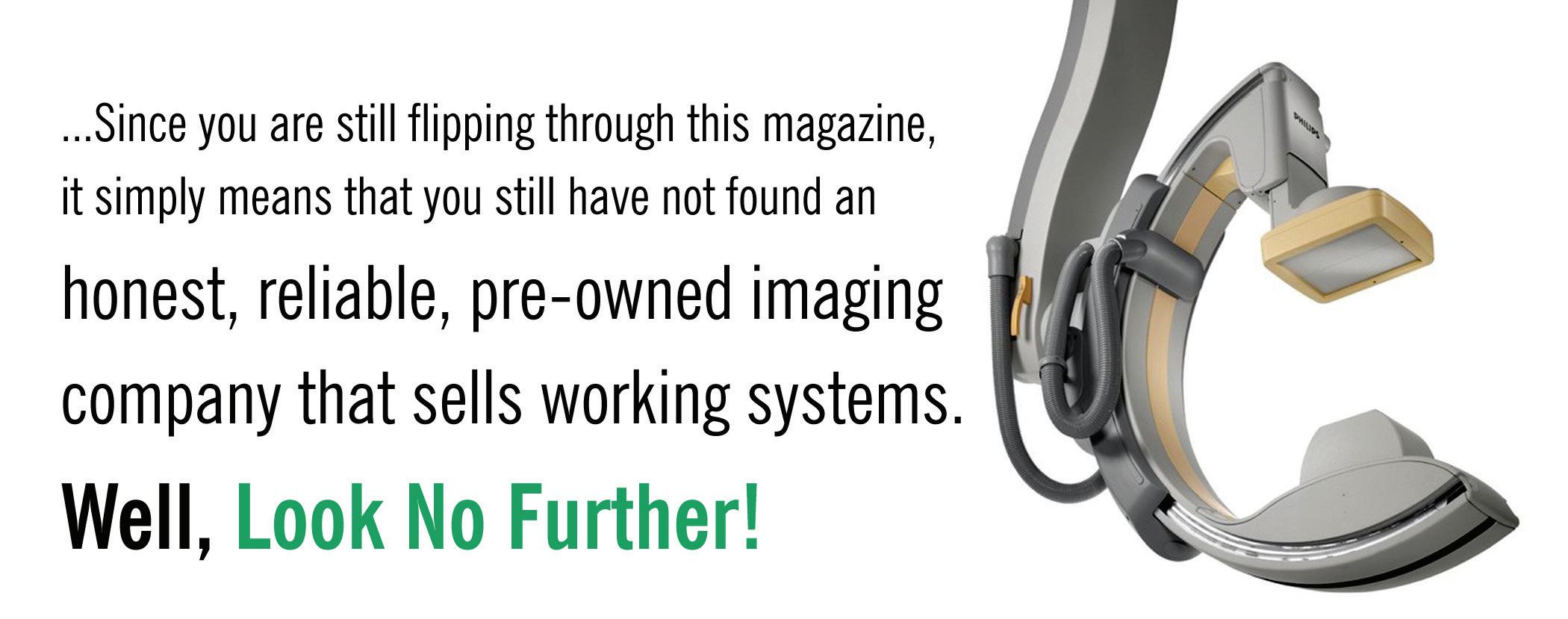

ADVANCING THE IMAGING PROFESSIONAL 50 ICEMAGAZINE | MARCH 2024

THE ROMAN REVIEW
MANNY ROMAN
WHAT YOUR BODY IS ACTUALLY SAYING
The MD Expo is coming to Vegas! The MD Expo (mdexposhow.com) will be held next month April 7-9, just 40 minutes from where we live so we are happy about that. We are also happy that I am invited to conduct a presentation at the MD Expo on Sunday, April 7 at 11:30 a.m. They know that I sleep until 10 so they gave me wakeup time.
My presentation is titled “What Your Body is Actually Saying.” We will explore the process of complete communication, which includes a good grasp of the nonverbal cues: The language of the body.
When people enter into the process of communication, it truly is a negotiation for the understanding of the message which is being discussed. We use words, tone and inflection and nonverbal cues to encode and convey the message. The person receiving the encoded message is tasked with deciphering and decoding the message. I will discuss the filtration systems and the internal and external barriers in my presentation.
Some research indicates that 7% of a message is carried by the words, 38% is carried by the intonations of the spoken words, and 55% is carried by the body language. You would think that it is an advantage to not only know this but to also be proficient at reading the body language since it carries most of the message. It can be an advantage and also a problem.
The nonverbal cues to the real meaning of a communication are hugely important to the message. Unless someone is uncomfortable with what they are saying, the words, intonations and nonverbal cues all match nicely. The message is sent, received, decoded and understood fairly well.
When discomfort enters the picture, the sender of the message finds it hard to control what their body is saying. Subtle discrepancies between the verbal and nonverbal messages pop into plain view to the observant receiver of the message. We will discuss many of these discomfort signs, and their meaning, in my presentation.
What do you do when you see these signs that the person is uncomfortable with what the words are saying? Do you confront? Yes, but only if you care about the individual, the situation or the outcome. How do you confront? Gently, by asking for clarification and consensus on the message. This begins the negotiation for the true message.
I should point out here that when you see something in someone’s body language, you should probe to be sure you are correct before taking action on it. It is the action that normally gets us in trouble, not the conclusion we reach.
What about the “practiced deceivers” who are pretty good at controlling their nonverbal cues? These are a great problem to me. You see, I know they are lying because their lips are moving, but I can’t detect any other sign.
I hope you will join me in my presentation of the full communication process including the nonverbal, body language cues.
The good folks at MD Publishing asked that I provide a good picture of me for the MD Expo marketing. My lovely wife Ruth told them to use the same picture they use for this column because: “I don’t look like I look now, I look like I looked then.” Whuuaaaaat?
How about that for 7% communication! •
Manny Roman, CRES, is association business operations manager at Association of Medical Service Providers.
INSIGHTS
ICEMAGAZINE 51 THEICECOMMUNITY.COM

MEDICINE FOR THE SOUL
5 HABITS TO REDUCE STRESS
BY FAMILY FEATURES
Between work, family obligations and a constantly changing world, people in the United States are stressed. In fact, U.S. workers are among the most stressed in the world, according to a State of the Global Workplace study. While some stress is unavoidable and can be good for you, constant or chronic stress can have real consequences for your mental and physical health.
Chronic stress can increase your lifetime risk of heart disease and stroke. It can also lead to unhealthy habits like overeating, physical inactivity and smoking while also increasing risk factors, including high blood pressure, depression and anxiety. However, a scientific statement from the American Heart Association shows reducing stress and cultivating a positive mindset can improve health and well-being.
To help people understand the connection between stress and physical health, the American Heart Association offers these science-backed insights to help reduce chronic stress.
STAY ACTIVE
Exercise is one of the easiest ways to keep your body healthy and release stress. Physical activity is linked to lower risk of diseases, stronger bones and muscles, improved mental health and cognitive function and lower risk of depression. It can also help increase energy and improve quality of sleep. The American Heart Association recommends adults get at least 150 minutes per week of moderate-intensity activity, 75 minutes of vigorous activity or a combination.
MEDITATE
Incorporate meditation and mindfulness practices into your day to give yourself a few minutes to create some distance from daily stress. Some studies show meditation can reduce blood pressure, improve sleep, support the immune system and increase your ability to process information.
PRACTICE POSITIVITY
A positive mindset can improve overall health. Studies show a positive mindset can help you live longer, and happy individuals tend to sleep better, exercise more, eat better and not smoke. Practice positive self-talk to help you stay calm. Instead of saying, “everything is going wrong,” re-frame the situation and remind yourself “I can handle this if I take it one step at a time.”
SHOW GRATITUDE
Gratitude – or thankfulness – is a powerful tool that can reduce levels of depression and anxiety and improve sleep. Start by simply writing down three things you’re grateful for each day.
FIND A FURRY FRIEND
Having a pet may help you get more fit; lower stress, blood pressure, cholesterol and blood sugar; and boost overall happiness and well-being. When you see, touch, hear or talk to companion animals, you may feel a sense of goodwill, joy, nurturing and happiness. At the same time, stress hormones are suppressed. Dog ownership is also associated with a lower risk of depression, according to research published by the American Heart Association. •
Find more stress-management tips at Heart.org/stress.
INSIGHTS
ADVANCING THE IMAGING PROFESSIONAL 52 ICEMAGAZINE | MARCH 2024
Photos courtesy of Getty Images


you want to lift yourself up, lift up someone else.”
ICE Break Visit theicecommunity.com for the solution. IMAGING CROSSWORD Quote of the Month: “If
— Booker T. Washington ACROSS 1 Field of medicine targeting disease states via molecular imaging and radioisotopes to create a form of personalized medicine 8 Body representing radiology professionals, abbr. 10 Examination 11 Chlorofluorocarbon (abbr.) 12 Part of the large intestine 13 Distinct nuclear species of the same chemical element 15 Separate carefully, 2 words 17 Manage 18 Early morning body extension to tighten and exercise muscles 20 _____centesis 22 Common port type 24 Practice and techniques for identifying diseases 27 Capt.’s guess, abbr. 29 Centimeter, abbr. 30 Place 31 Liver related DOWN 1 Radioactive _____: used to help find problems inside the body 2 Ahead of an expected time 3 Org., abbr. 4 Eye specialist 5 Gland near the trachea 6 Machine that accelerates charged particles or ions to high energies 7 Check for indications of disease 9 Company, briefly 14 The C in CEM 16 Pioneer in electromagnetism and electrochemistry 18 Metal used in the manufacture of many medical instruments 19 Guess 20 Stomach muscles, abbr. 21 Part of some co. names 23 A smattering of 25 Ending for many doctors’ professions 26 Bursa 28 Tantalum symbol ICEMAGAZINE 53 WWW.THEICECOMMUNITY.COM
ADVERTISER INDEX

AllParts Medical
2

CM Parts Plus
43

DirectMed Imaging
Engineering Services
5
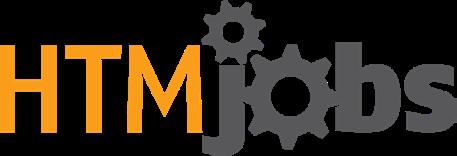
HTMJobs.com
36-37

ICE Webinars

Innovatus Imaging
32
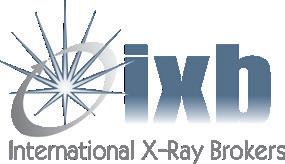
International X-Ray

KEI Medical Imaging

Maull Biomedical

Medilab

PM Imaging Management
47

Radon Medical LLC
24
Ray-Pac®
Ray-Pac
56
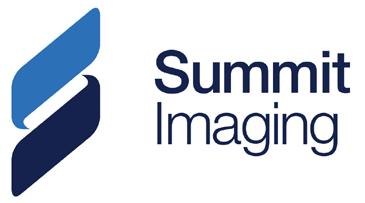
Summit Imaging, Inc.
23

Metropolis International
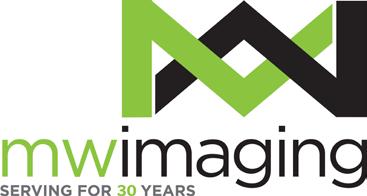
Radiological Service Training Institute
3
SOLUTIONS
TriImaging Solutions
55
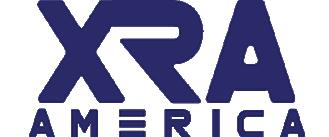
X-Ray America
21
INDEX
p.
p.
p. 4
p.
p.
p. 27
p. 9,
p. 25
p. 50
p. 47
Global p. 21
p. 50
MW Imaging Corp. p. 13
p.
p.
p.
p.
p.
p.
ADVANCING THE IMAGING PROFESSIONAL 54 ICEMAGAZINE | MARCH 2024
p.
THE TOTAL PACKAGE HAS ARRIVED.



Ray-Pac.com


















 BY GERRI HUNT
BY GERRI HUNT










































 - D. Anderson, Tanana Chiefs Conference
- D. Anderson, Tanana Chiefs Conference




 BY MARK WATTS PACS/IT
BY MARK WATTS PACS/IT
































